Kashgar: Images of Demolition from the Cradle of Uyghur Culture
Uyghur Human Rights Project in collaboration with Werner Haug, Abduweli Ayup, Ihtibar Yasen, and Memet Sawut
March 9, 2022
Werner Haug, a Swiss photographer and sociologist, traveled to Kashgar in 2003. On that trip, he took a series of photos documenting both daily life in the Uyghur old city and the Chinese state-led demolition underway at the time. Below we have published a collection of Mr. Haug’s photographs and writings about the trip. His account is accompanied by responses to the photos written by Uyghur diaspora members who were born and raised in Kashgar.
The Journey to Kashgar
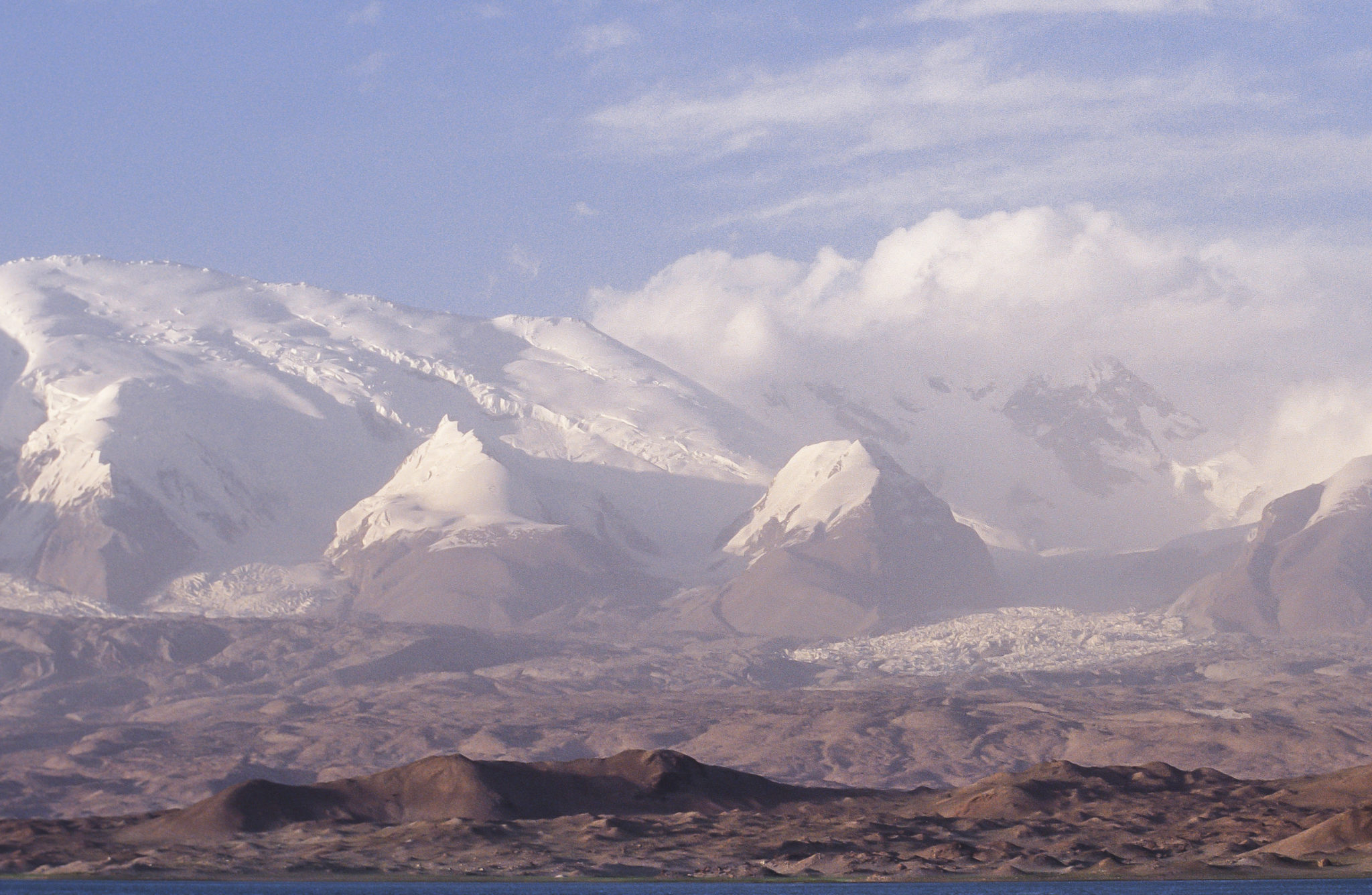
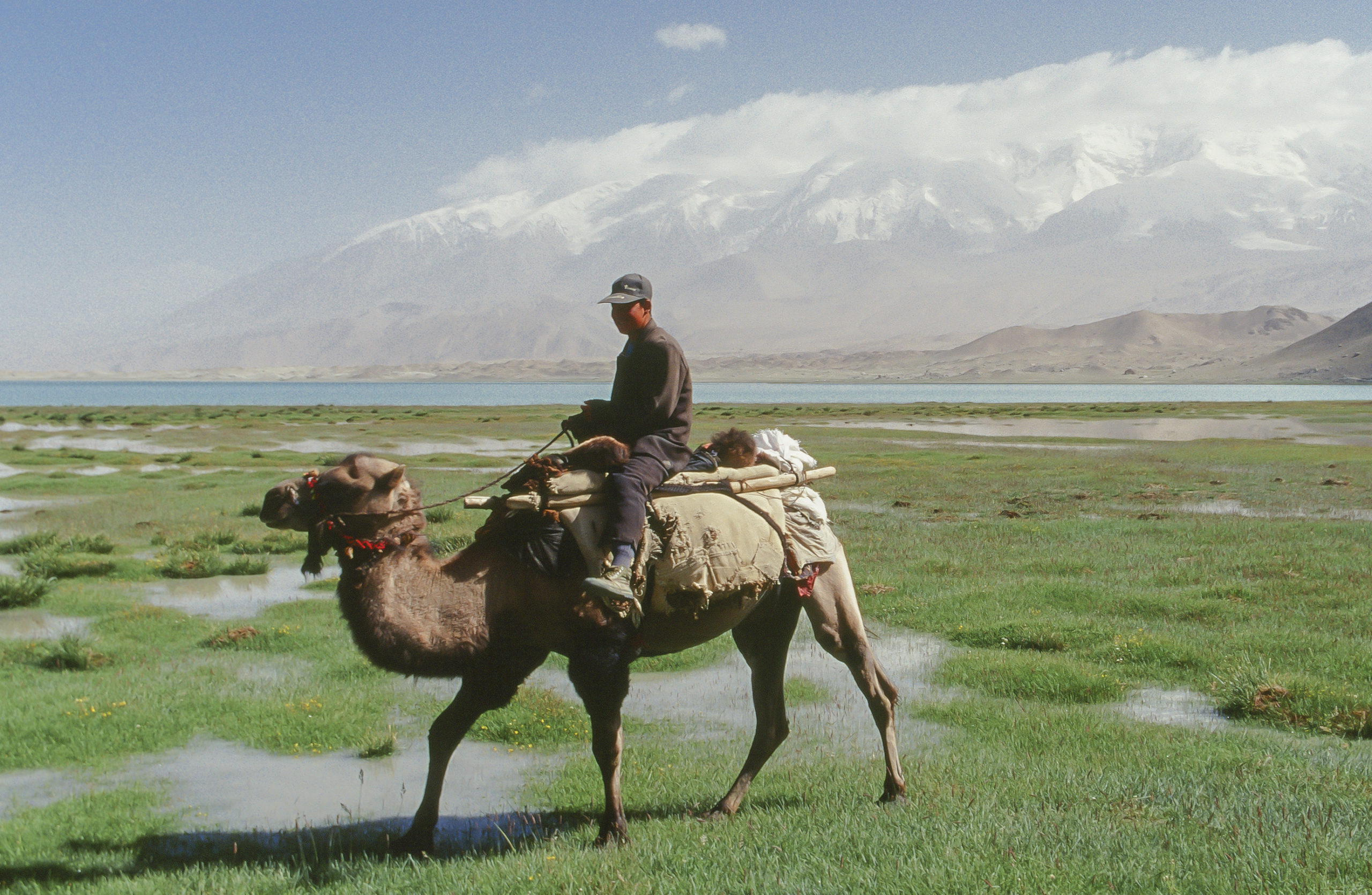
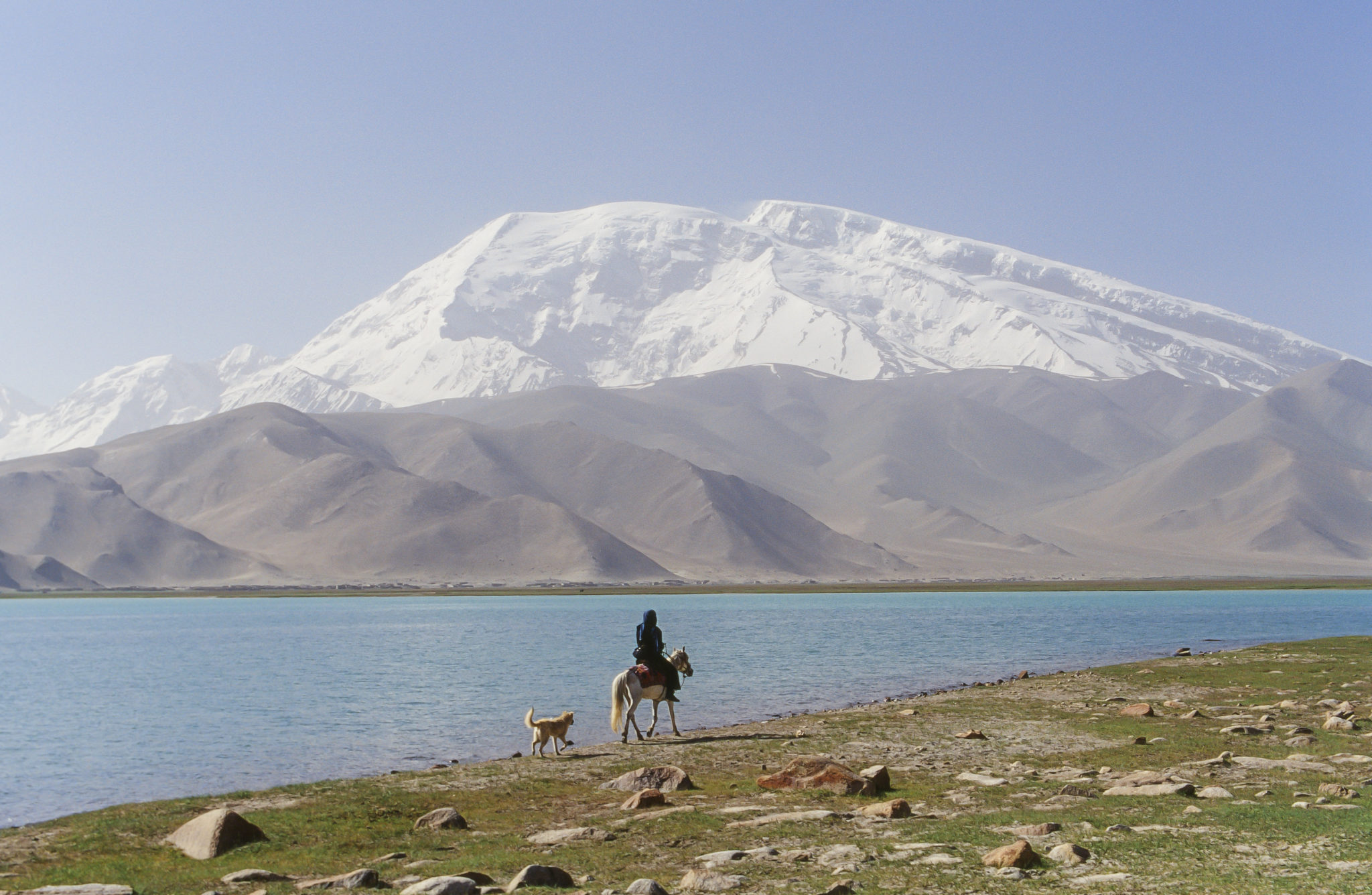
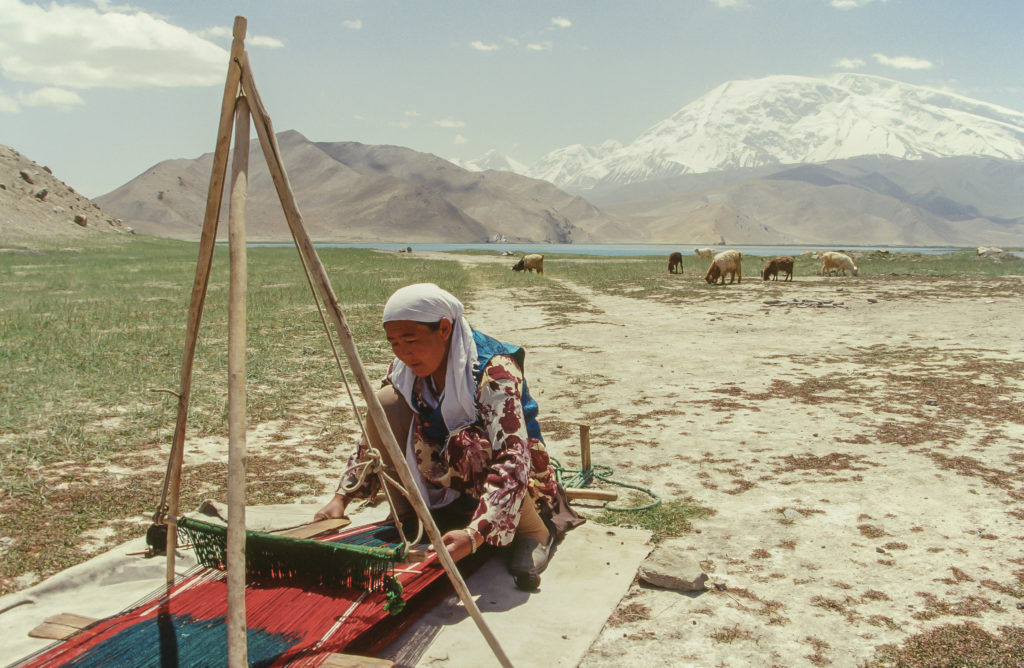
Scenes from the author's travels through Kizilsu Kyrgyz Autonomous District along the Karakoram Highway between Tashkorgan and Kashgar.
I traveled from Pakistan to Kashgar in the first convoy of Land Cruisers and pick-ups allowed to enter China via the Khunjerab pass on the Karakoram Highway following the first SARS epidemic and the closure of the Chinese land border in 2003. Our bus crossed the Pamir region and arrived in Kashgar, where I checked into the Chinibagh Hotel, on the afternoon of July 25. On July 31 I left Kashgar for the border crossing to Kyrgyzstan over the Torugart pass in the Tengritagh (Tianshan) mountains.
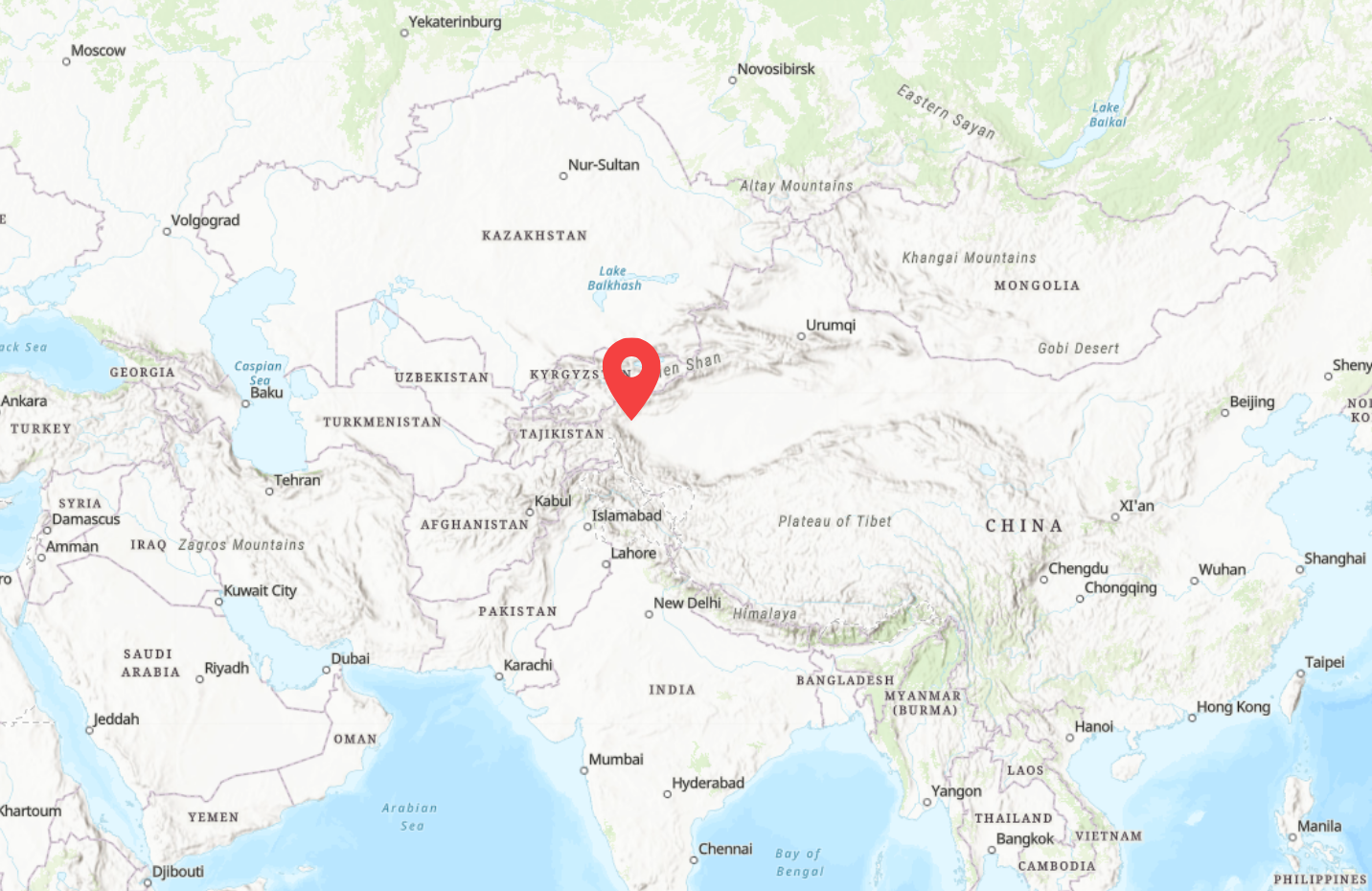
The red pinpoint shows the location of Kashgar city in the context of the Eurasian supercontinent.
Kashgar Memories: Abduweli Ayup
Kashgar is the cultural capital of the Uyghurs. It has not been our political or economic center since the invasion by the People's Liberation Army in 1949, but it has continued to play a role as our cultural capital. If Uyghur culture were a scale, Kashgar would be its standard unit of measurement. The changes in Kashgar—the Sinification and cultural loss—are a microcosm of the cultural loss Uyghurs have suffered as a whole. In other words, we can measure the present and future of the Uyghurs through Kashgar. Whatever becomes of Kashgar will become of all Uyghurs.
The changes in Kashgar—the Sinification and cultural loss—are a microcosm of the cultural loss Uyghurs have suffered as a whole.
Whenever I hear of Kashgar, I hear the sounds of . I see Id Kah. I smell . I have many stories to tell about Kashgar. I once went back with a buddy of mine from Chöcheck named Polat. As we were waiting on a street corner for another friend, a woman came up to us and asked if we wanted to wait inside her home. We refused and said, “No thank you, we're okay, we’ll just wait here.” And then she brought out a chair and water for us. I'll never forget that. In those days I was going back and forth between Kashgar and a Chinese city. I’d never seen someone in that other city bring out a chair and water for people they didn’t know. We were so happy. No one is a stranger in Kashgar. No matter who someone is or where they’re from, the Uyghurs of Kashgar see everyone as their guests. This is one of the things I love most about my home city.
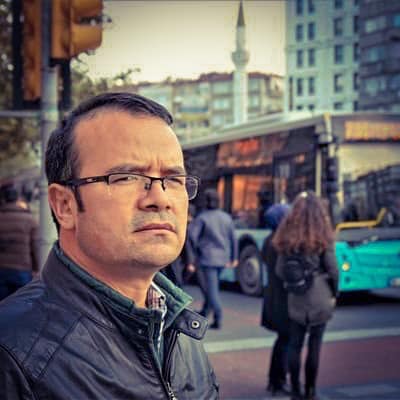
A Watershed Year
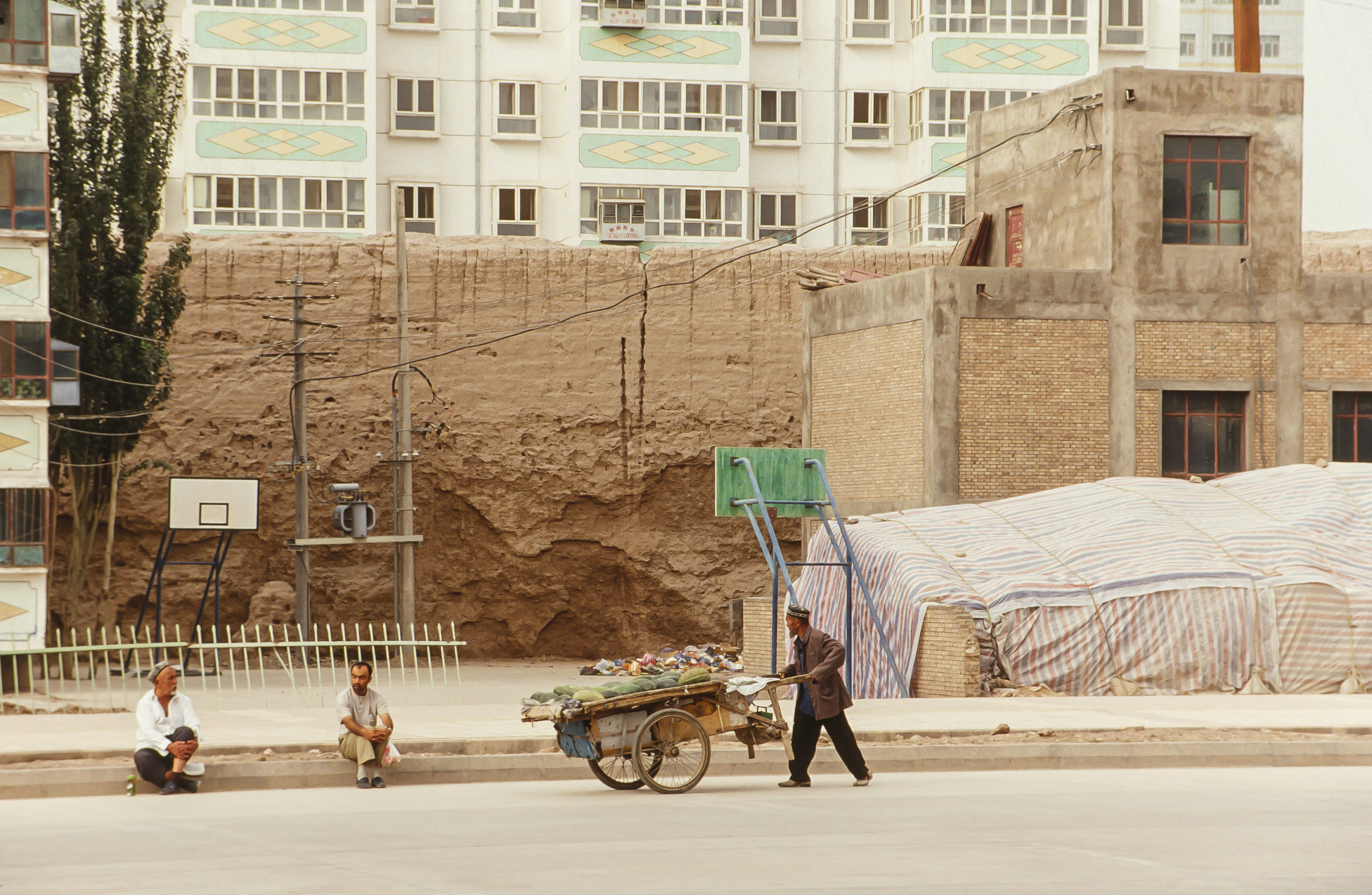
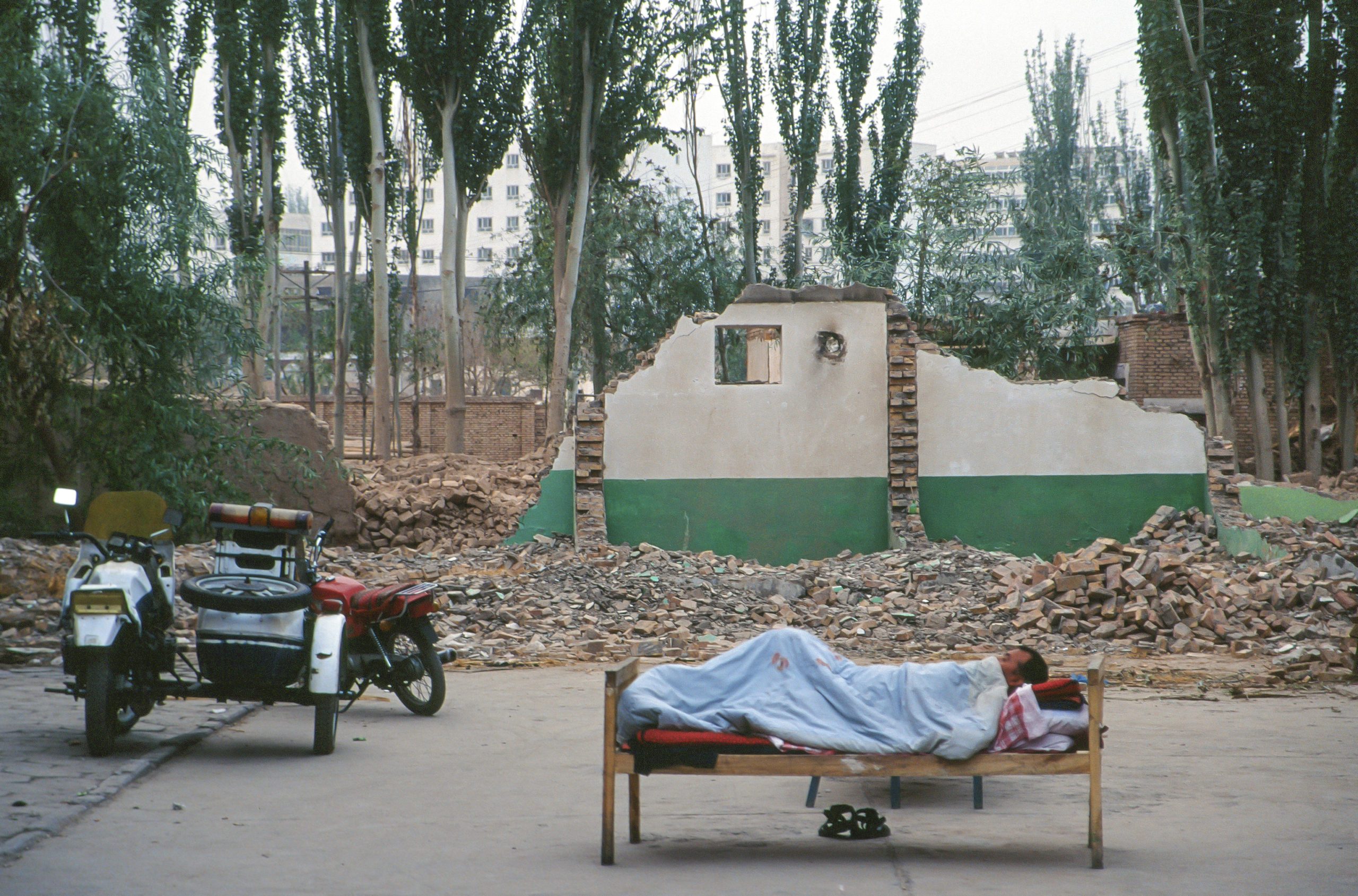
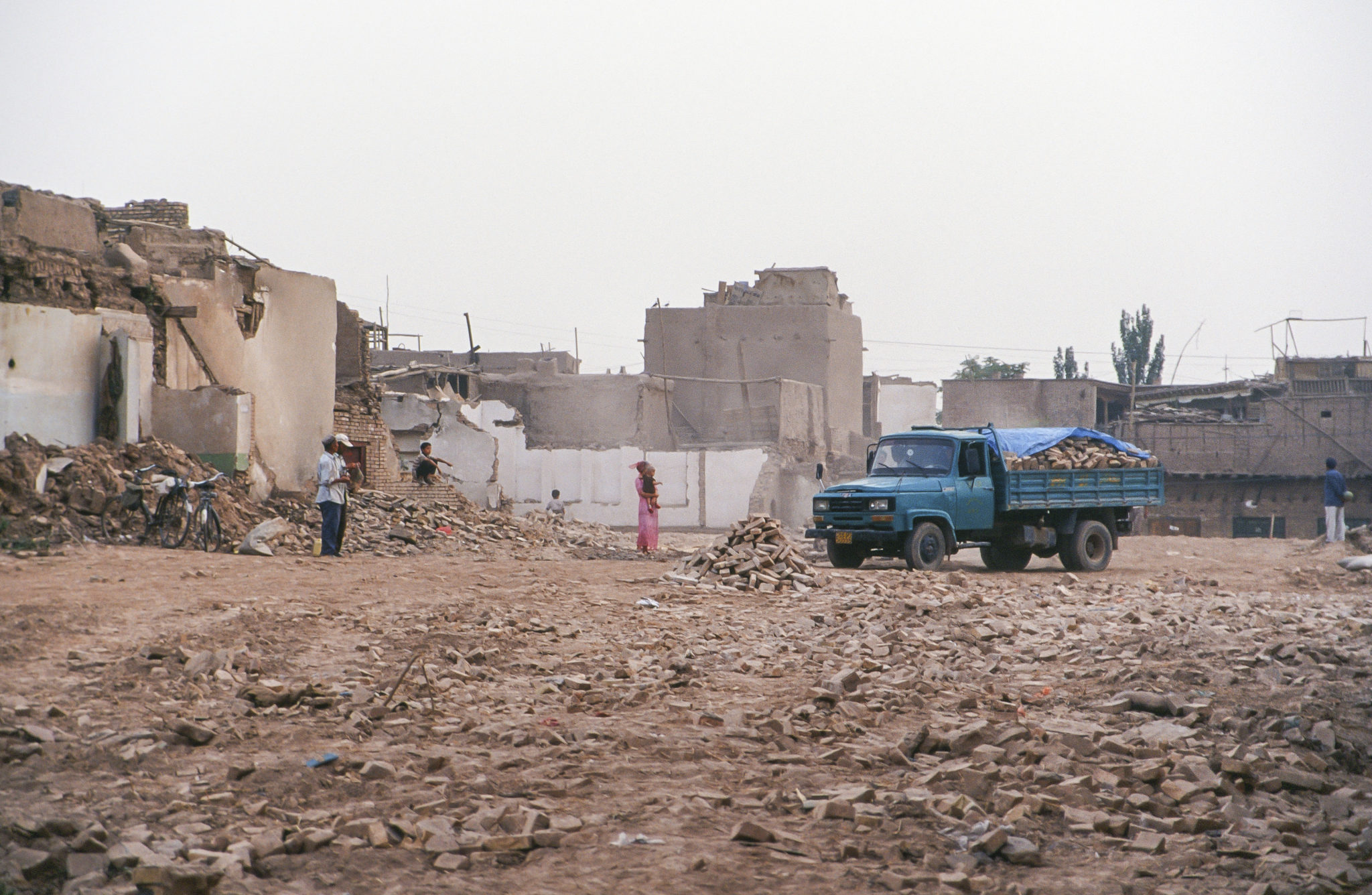
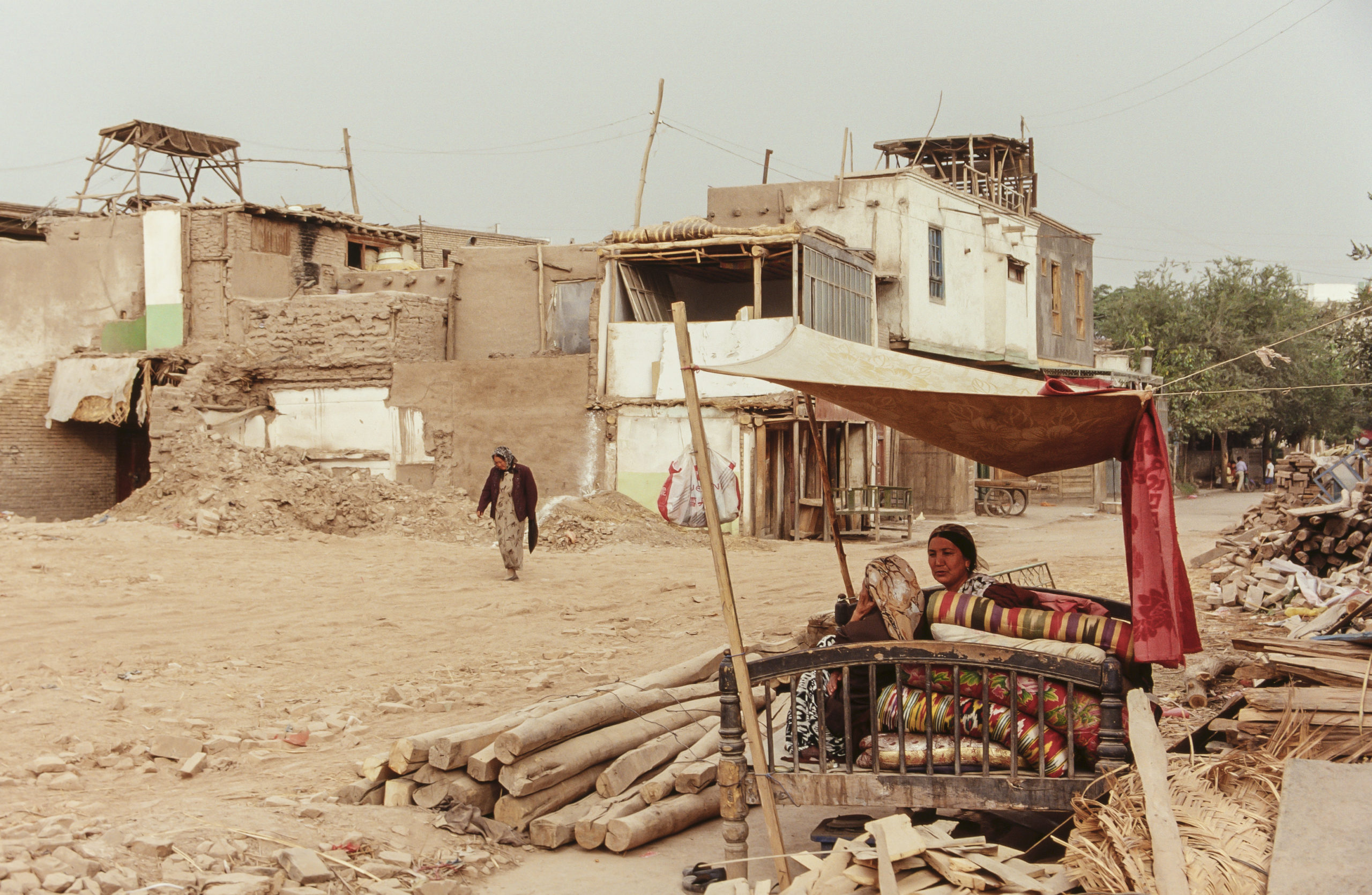
Uyghur residents of Kashgar go about daily life amidst ongoing demolition.
In 2002 and 2003, two targeted government interventions struck at the core of Muslim Uyghur Kashgar. The first such "intervention" was the demolition and restructuring of the areas around Id Kah, which separated the central mosque and square from the surrounding Uyghur community. The square lost its social function and religious symbolism.
The second intervention, the downsizing and elimination of open-air markets in Id Kah square as well as the areas around the old Sunday bazaar, diminished economic and social roles for urban and rural Uyghur businesspeople. New market halls, prefabricated stands, and supermarkets reduced business opportunities for local farmers, craftsmen, and traders, and subjected them to increased government control.
Destruction Around Id Kah
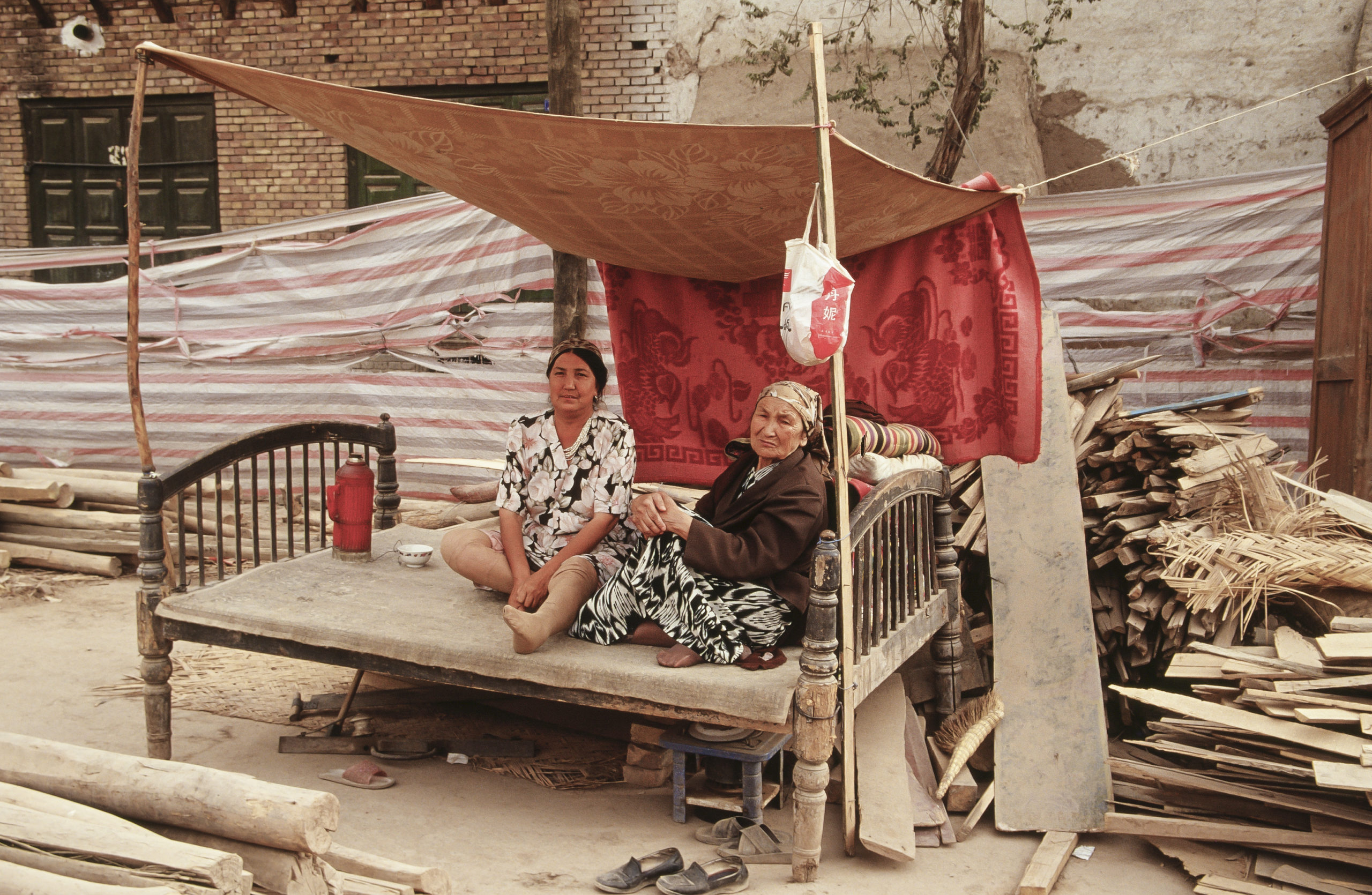
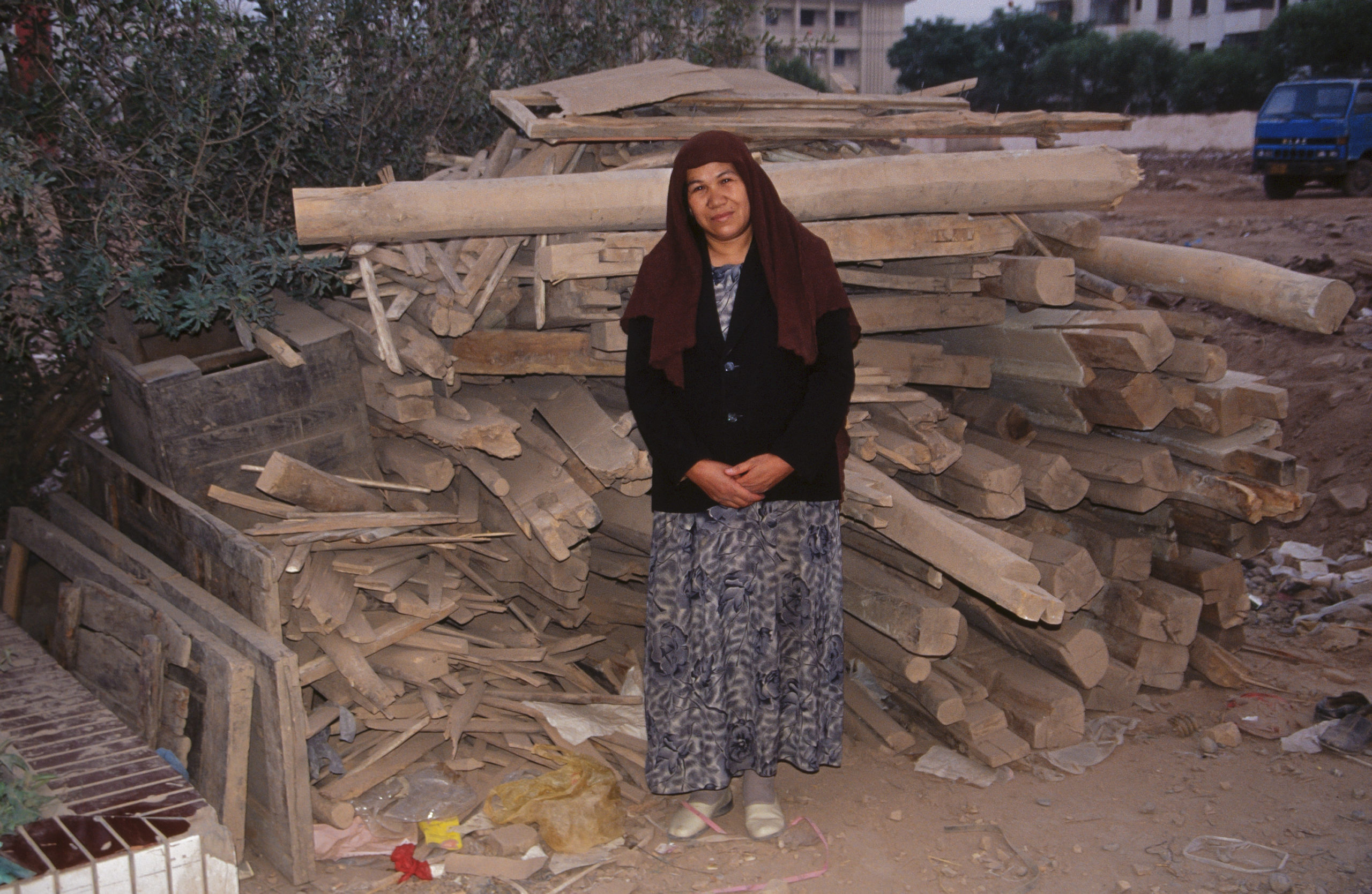
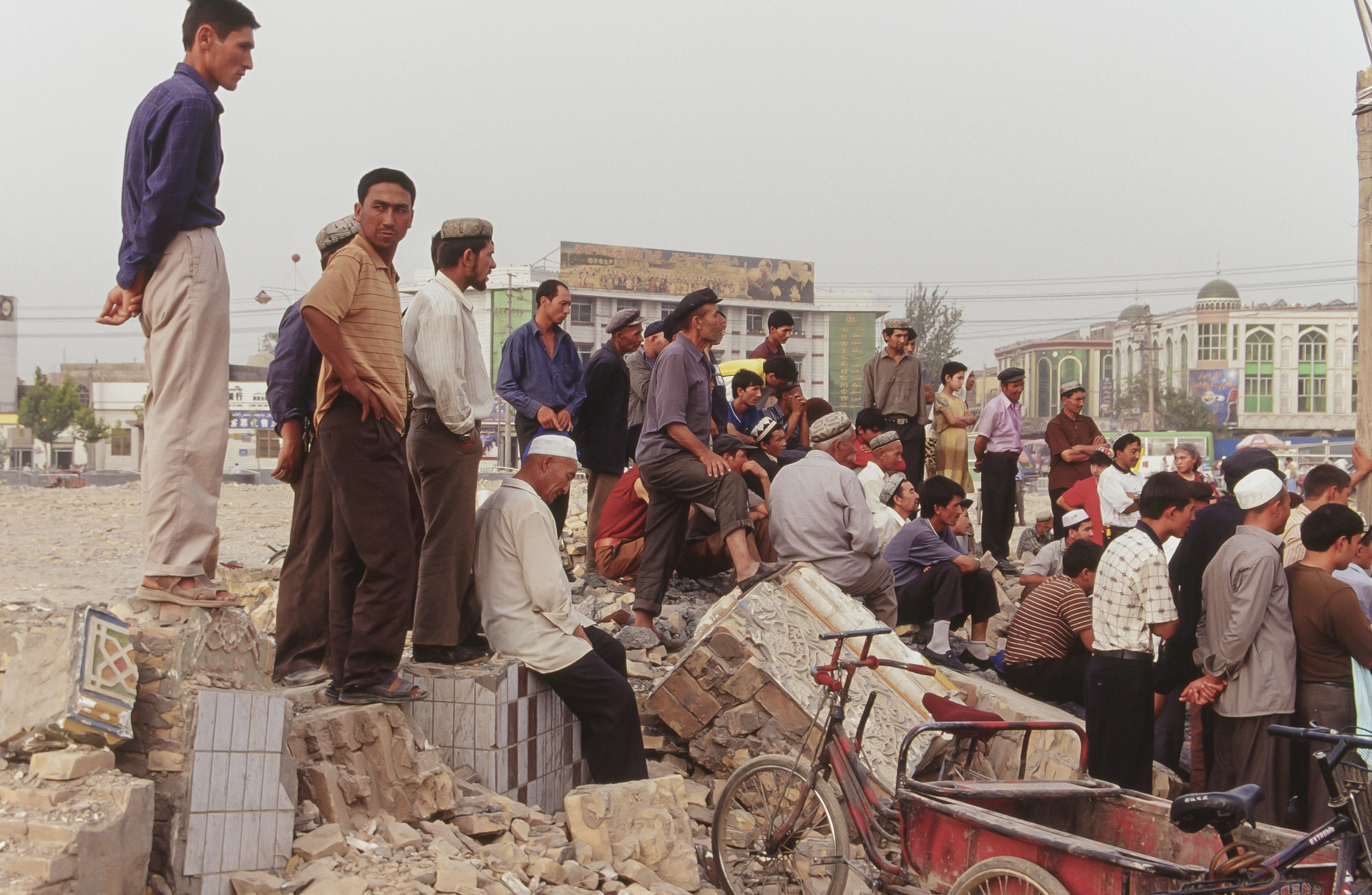
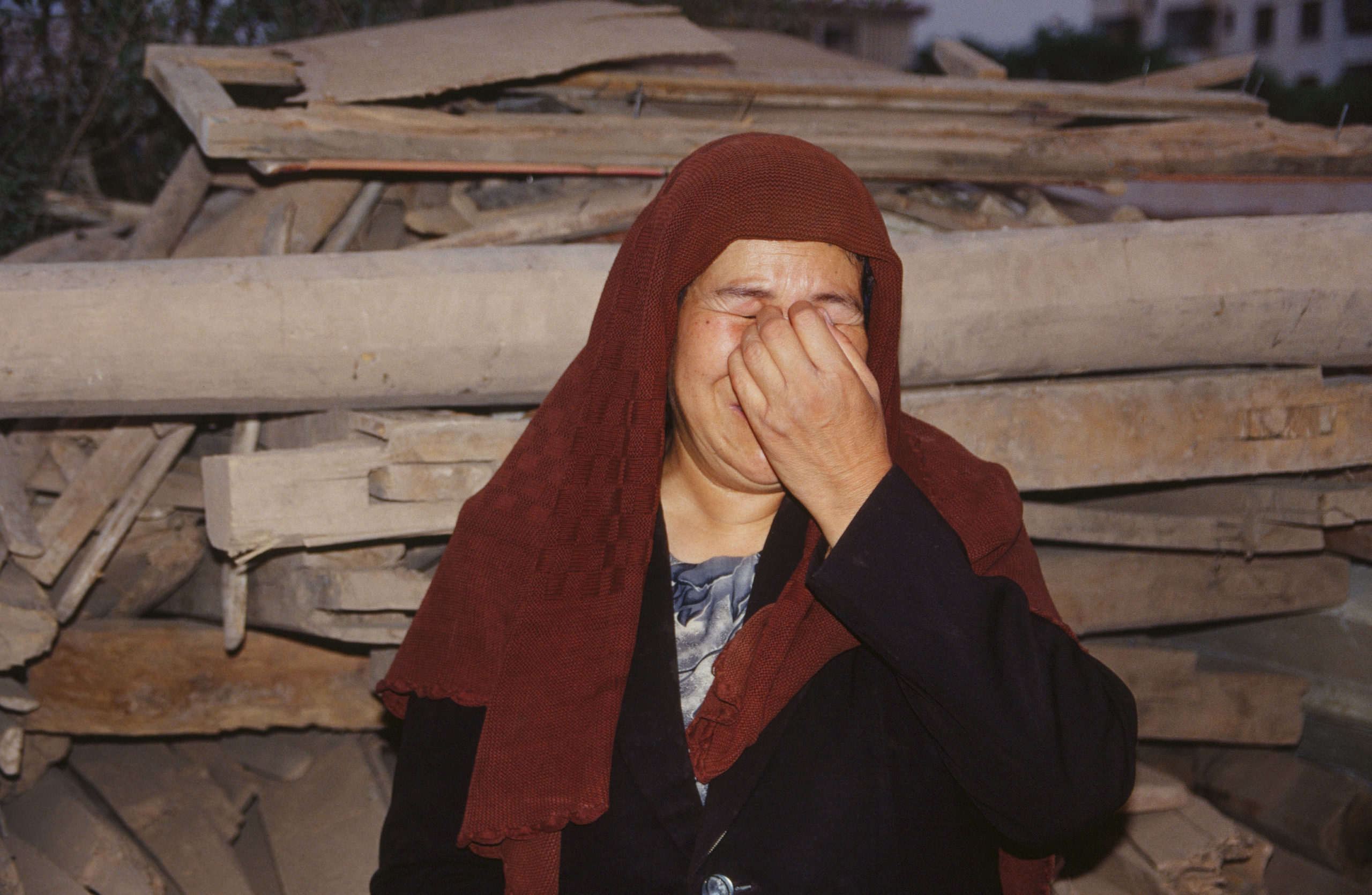
Uyghur residents of Kashgar sit and stand amidst ruins in the area surrounding Id Kah, arguably one of the most famous mosques in all of East Turkistan.
My hotel on Seman Road was a ten-minute walk from Id Kah, the religious and social center of Uyghur Kashgar. When I approached the mosque on July 25 to head to the night market on the square, I saw that the rose garden in front of the mosque, attested to in earlier photos, was gone. It was impossible to access Id Kah from the square.
I could see desperation on the victims' faces—alongside signs of silent and proud resistance.
In the days that followed, I observed the effects on individual citizens and families who had been forced to leave the ruins of their homes and evacuate the area. Some sat in the rubble on their wooden daybeds with their remaining belongings, while others piled up bricks and wood to salvage for use or sale. I could see desperation on the victims' faces—alongside signs of silent and proud resistance. Several people asked me to take photos of them surrounded by their belongings.
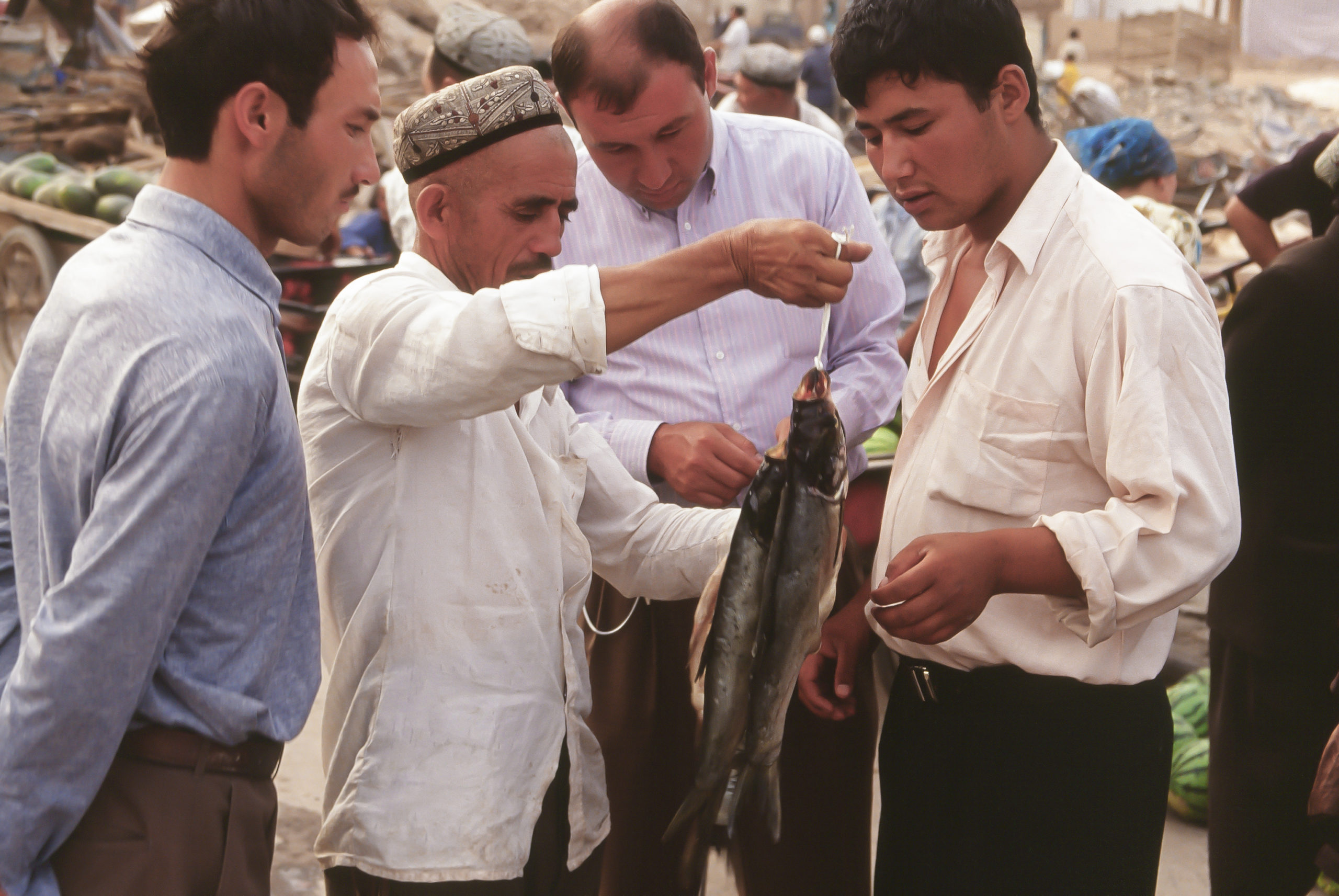
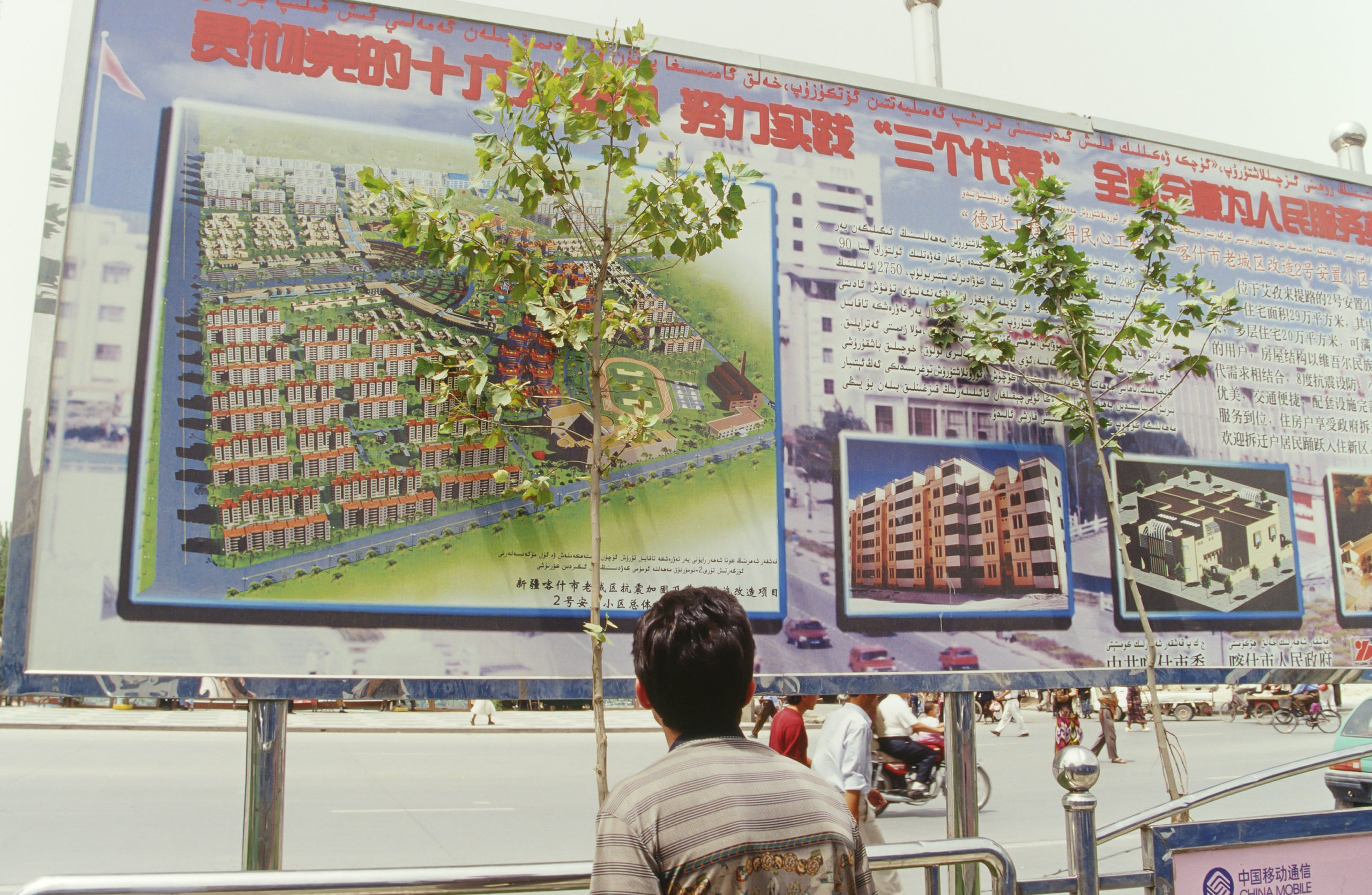
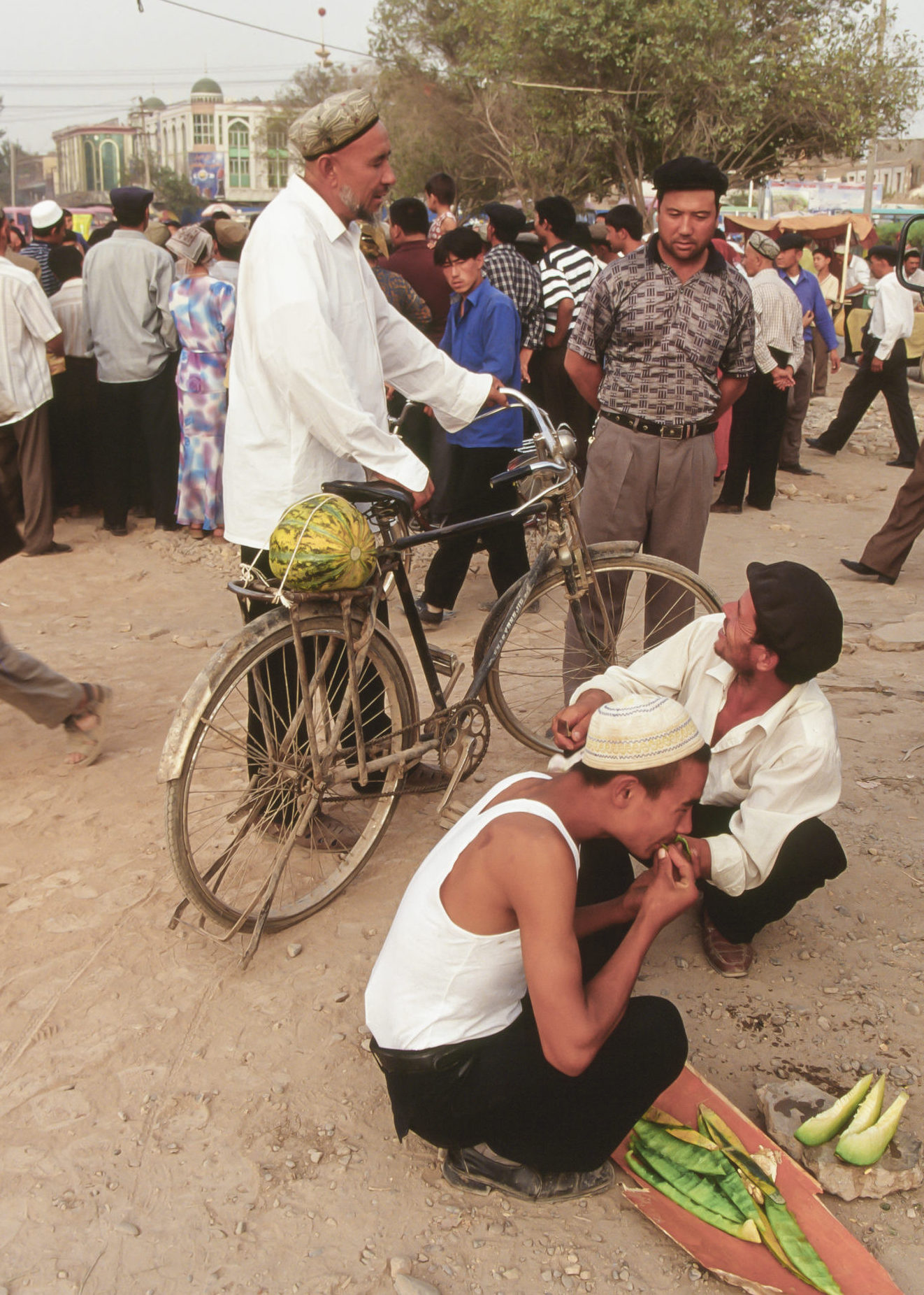
Top left and right: Uyghur residents of Kashgar go about daily business amidst ruins. Bottom left: A young man looks at a billboard advertising new housing construction in Kashgar.
Kashgar Memories: Memet Sawut
For me, Kashgar is the cradle of Uyghur culture. The history and culture of the Uyghurs are embodied there. Kashgar is the place where I was born and raised, where my umbilical blood was spilled, and so it is dear to me. In Kashgar we refer to our city as ezizane Kashgar, beloved Kashgar. It is a beloved land. There is no other place like it in the world. Its streets, its weather, its society and economy: it is the cradle of Uyghur life. That’s how I see it. To understand the culture and history of the Uyghurs, one must know Kashgar.

Resilience in the Face of Loss
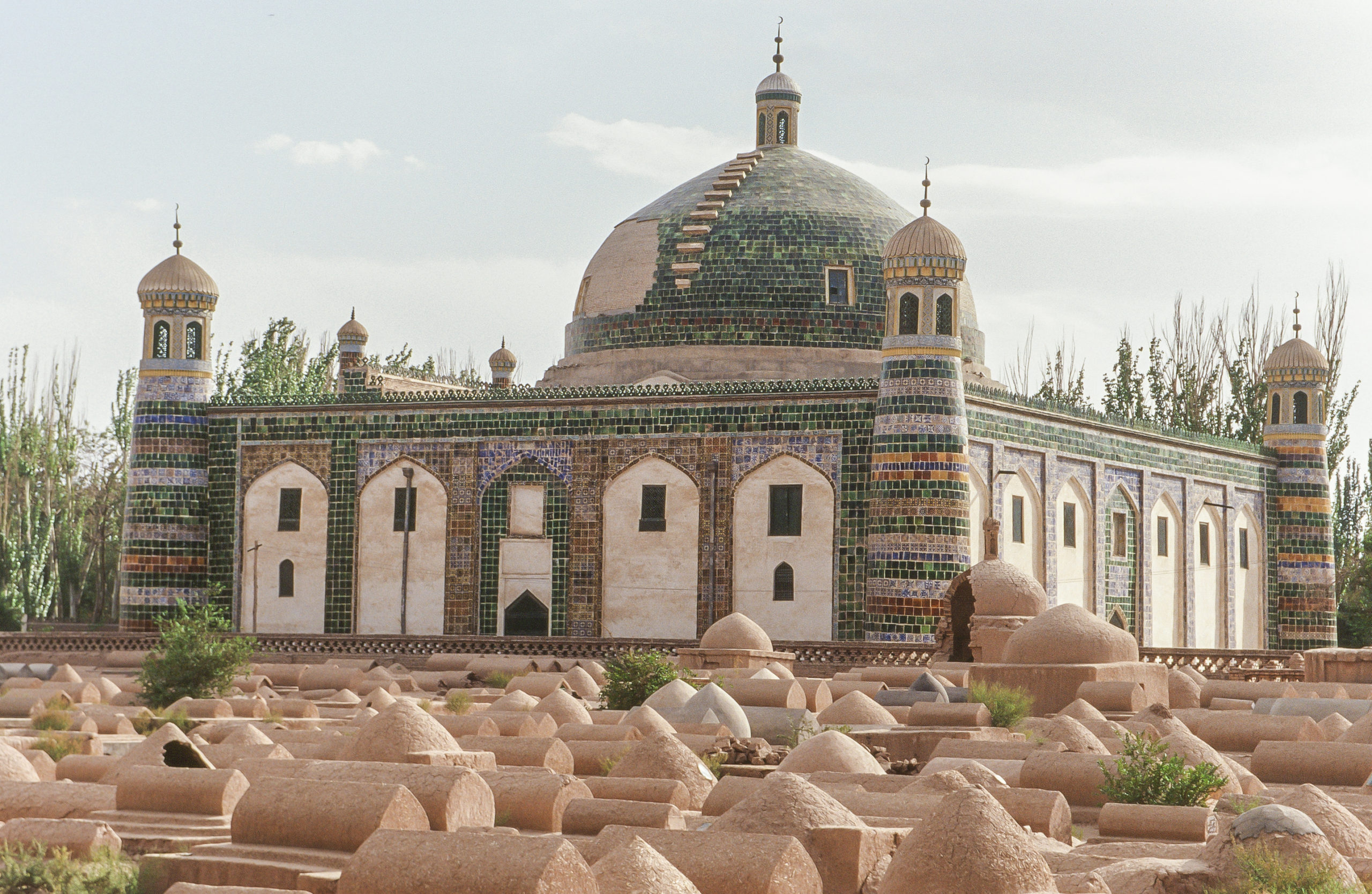
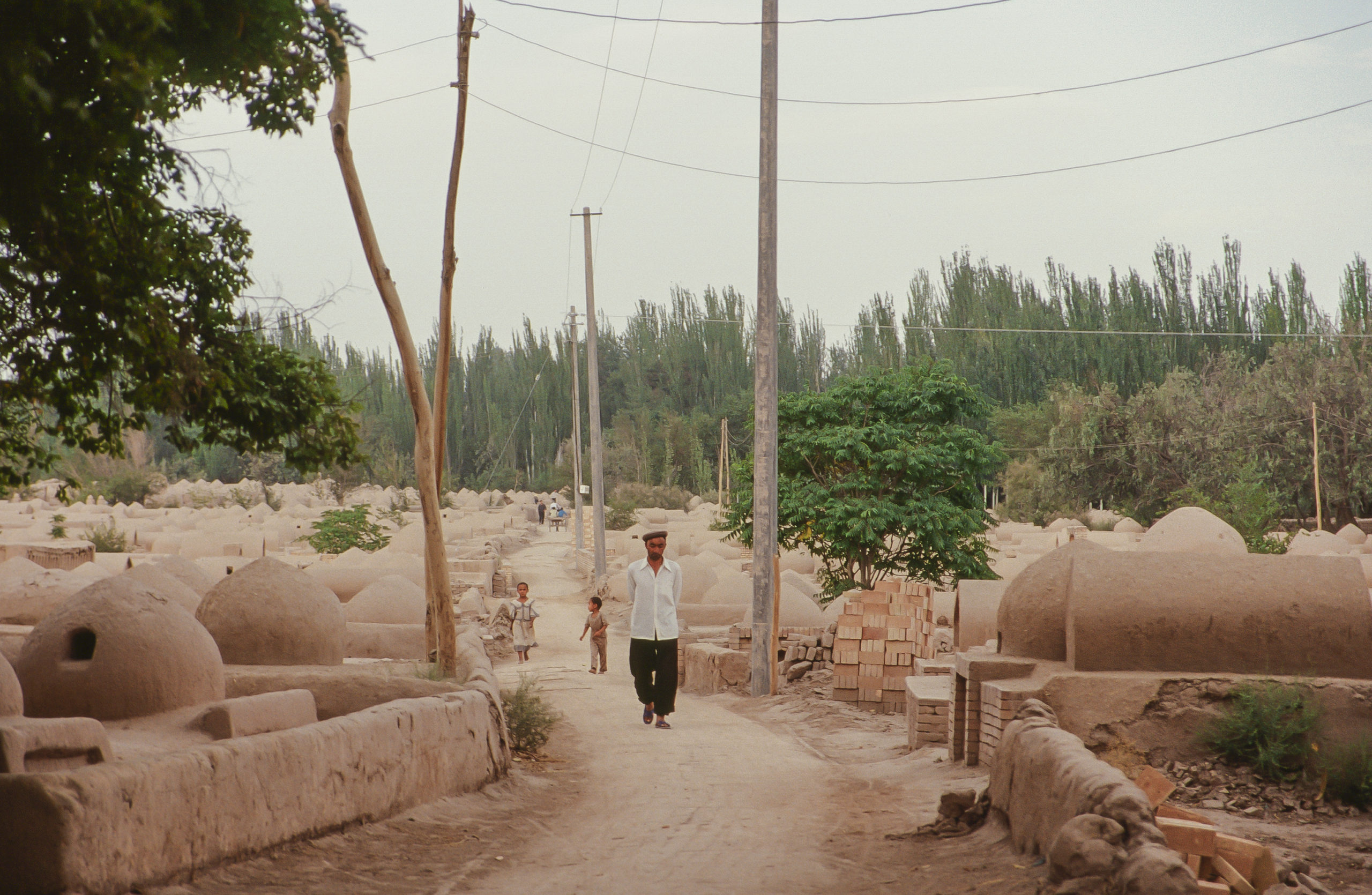
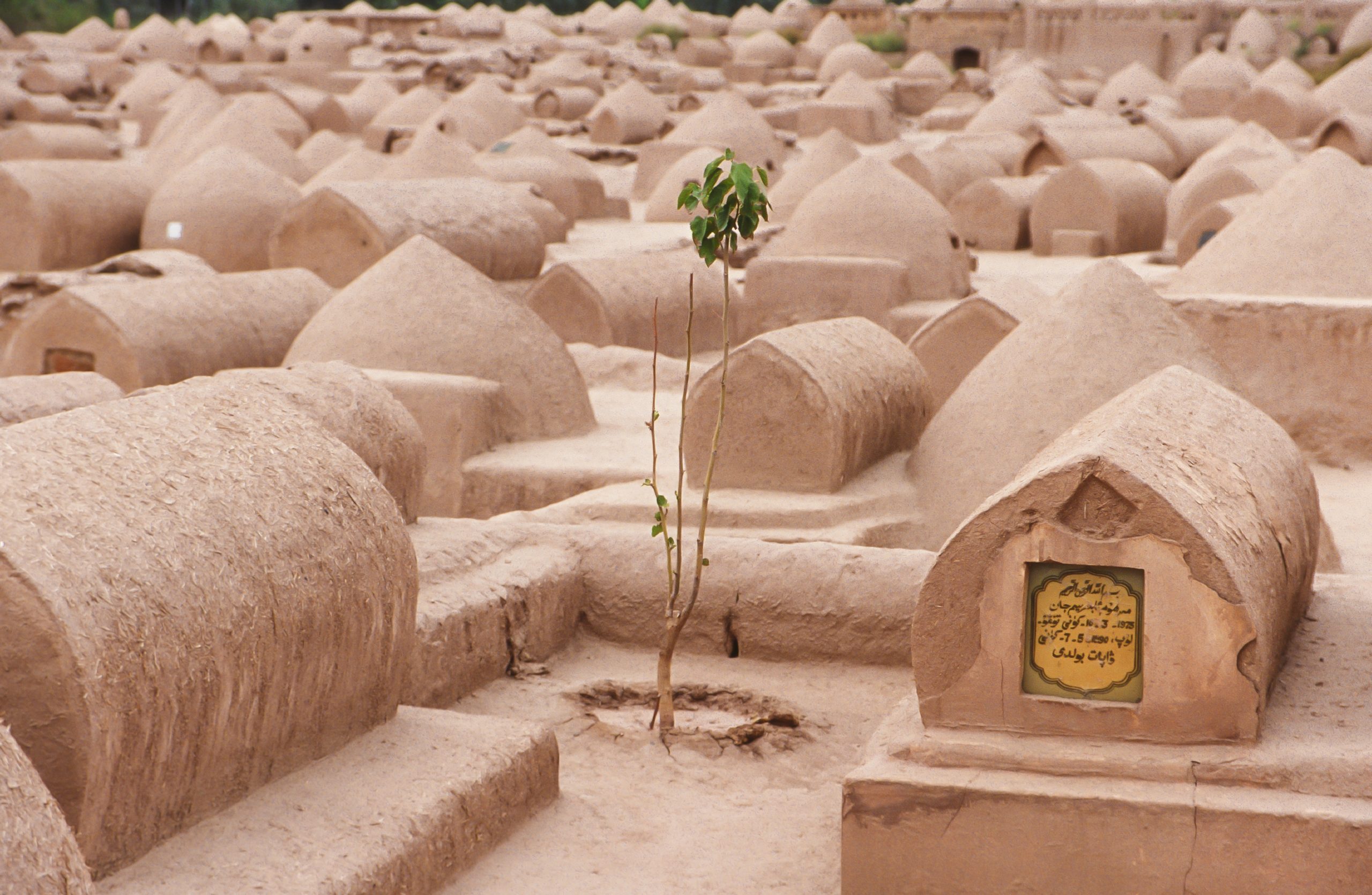
Scenes from the mazar of Apakh Hoja, long a site of pilgrimage for pious Uyghurs.
Demolitions were not limited to the area around Id Kah. Highways and connecting roads in the outskirts of Kashgar were under construction as well. On a road along the graveyards to the east of the Apakh Hoja , an old couple sat on concrete blocks. Behind them was their demolished house; in the distance were the apartment buildings of the “new Kashgar” and the Ferris wheel of East Lake Park, at the foot of the old city. The old city walls of Kashgar had been torn down and the moat filled in years before. The only remaining section of the original city wall touched Seman Road, close to my hotel on the opposite side of the old city, crumbling and crowded on all sides by new buildings.
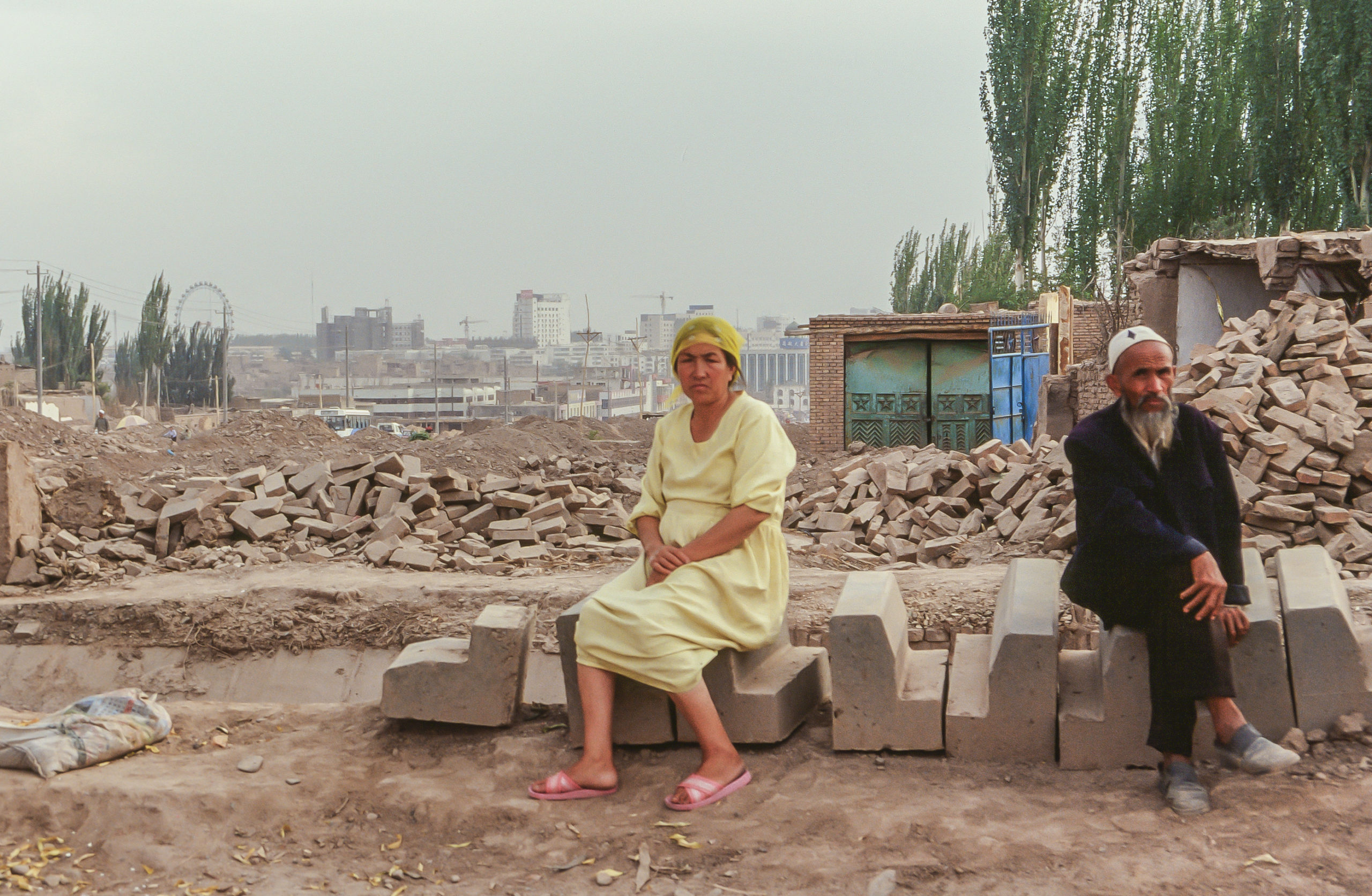
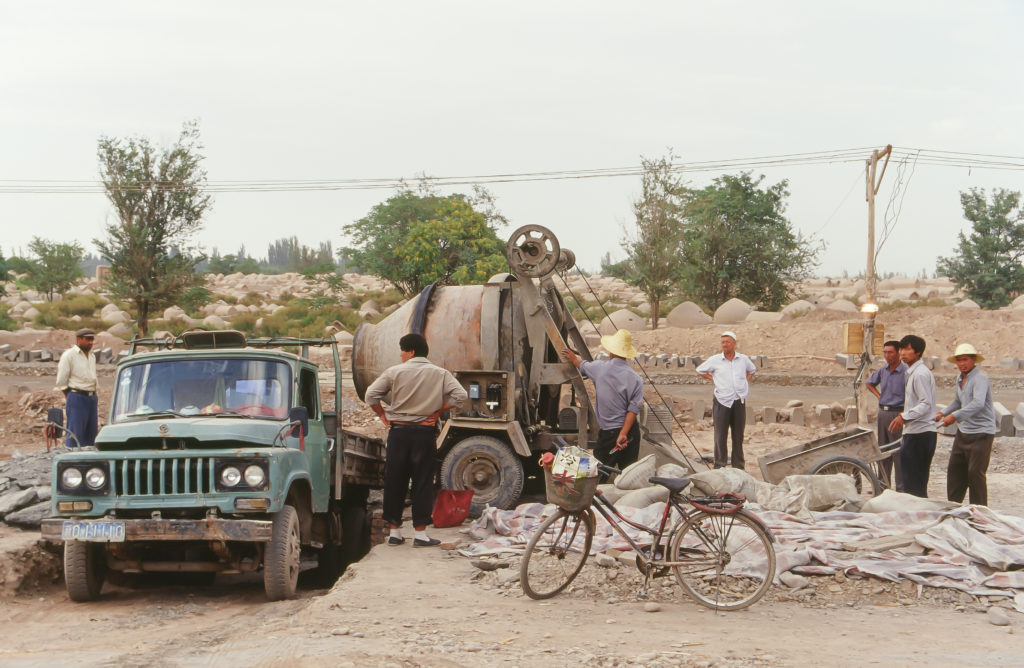
The immediate aftermath of demolition in residential areas near the Apakh Hoja mazar.
The mazar for Uyghur ruler and Sufi saint Apakh Hoja was built in 1640. With its green tiles, towers, and a dome in the same style as other Central Asian Sufi tombs, in the 1990s the site was turned into a tourist spot where visitors had to buy entrance tickets. It was an early example for the “museumification” and reinterpretation of Uyghur history that have spread across the Uyghur Region today.
Life in the Old City
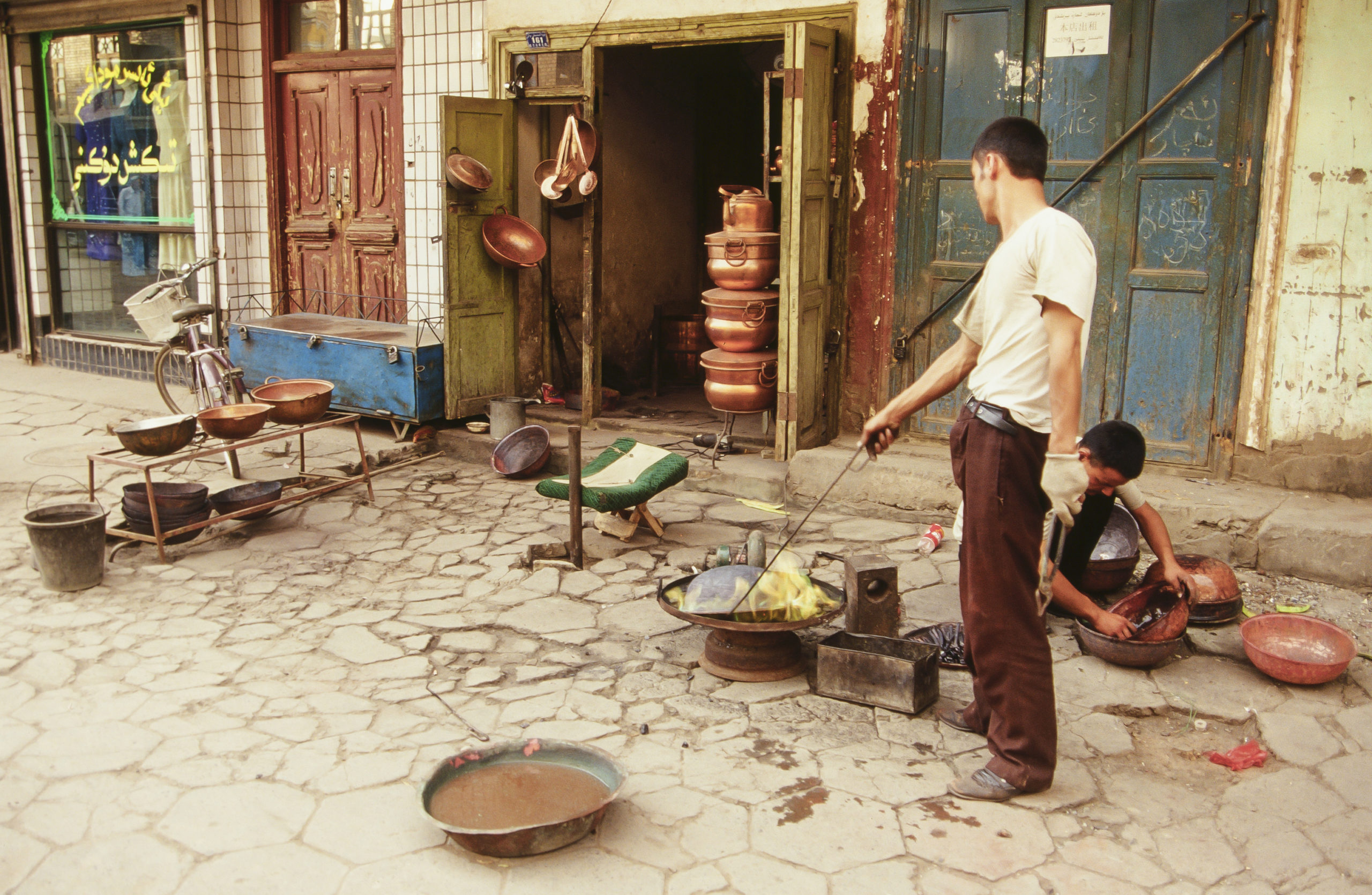
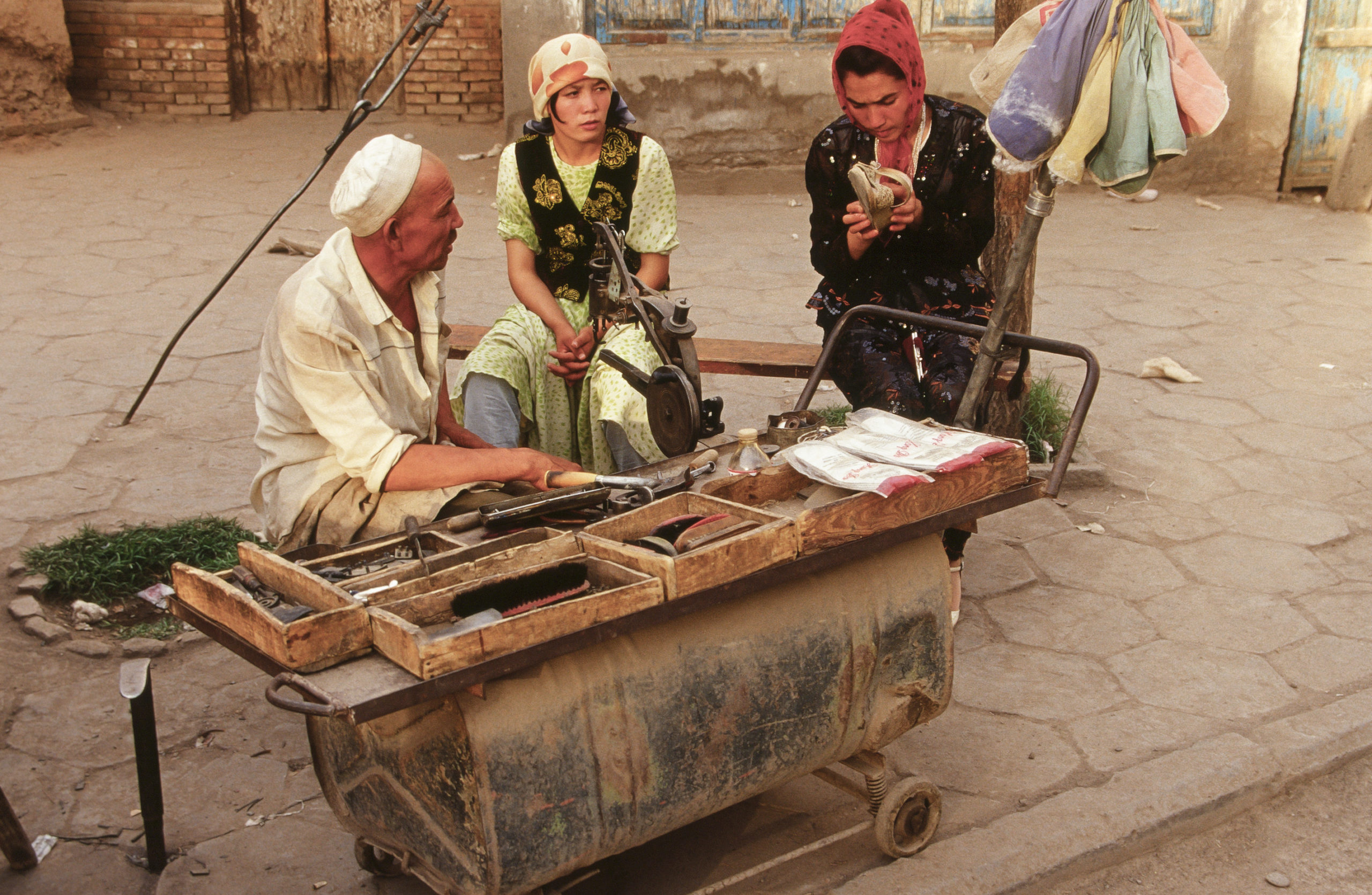
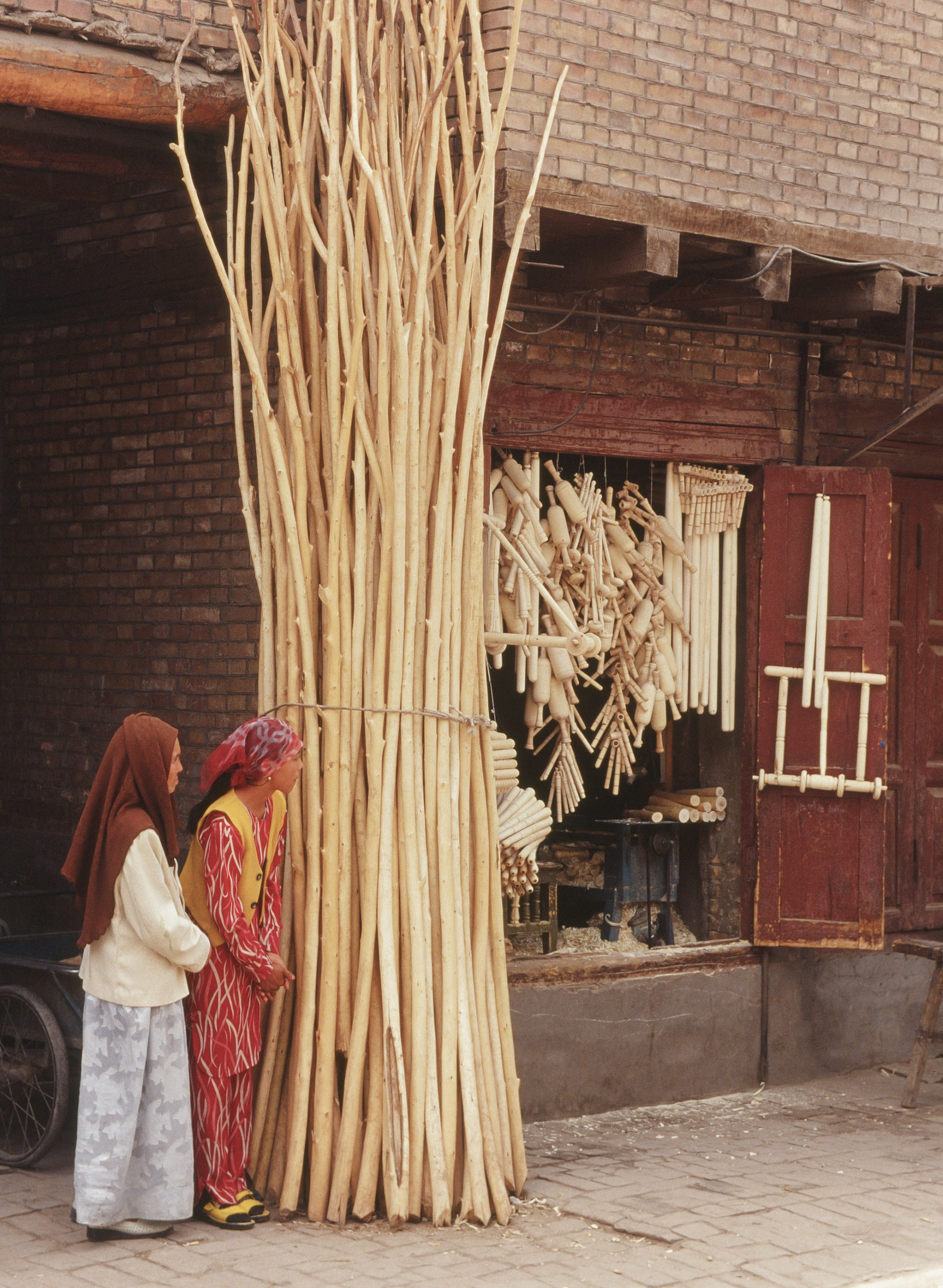
Craftspeople at work in Kashgar's old city.
With the exception of the area around Id Kah, the atmosphere in the old city was calm. Craftspeople worked in their modest studios or in the streets. Women wore colored headscarves and long dresses or red-purple shawls. Bakers were firing in . Food stalls offered Uyghur meals and takeaways including and , and other noodle dishes, fried fish and sheep's-head soup, and .
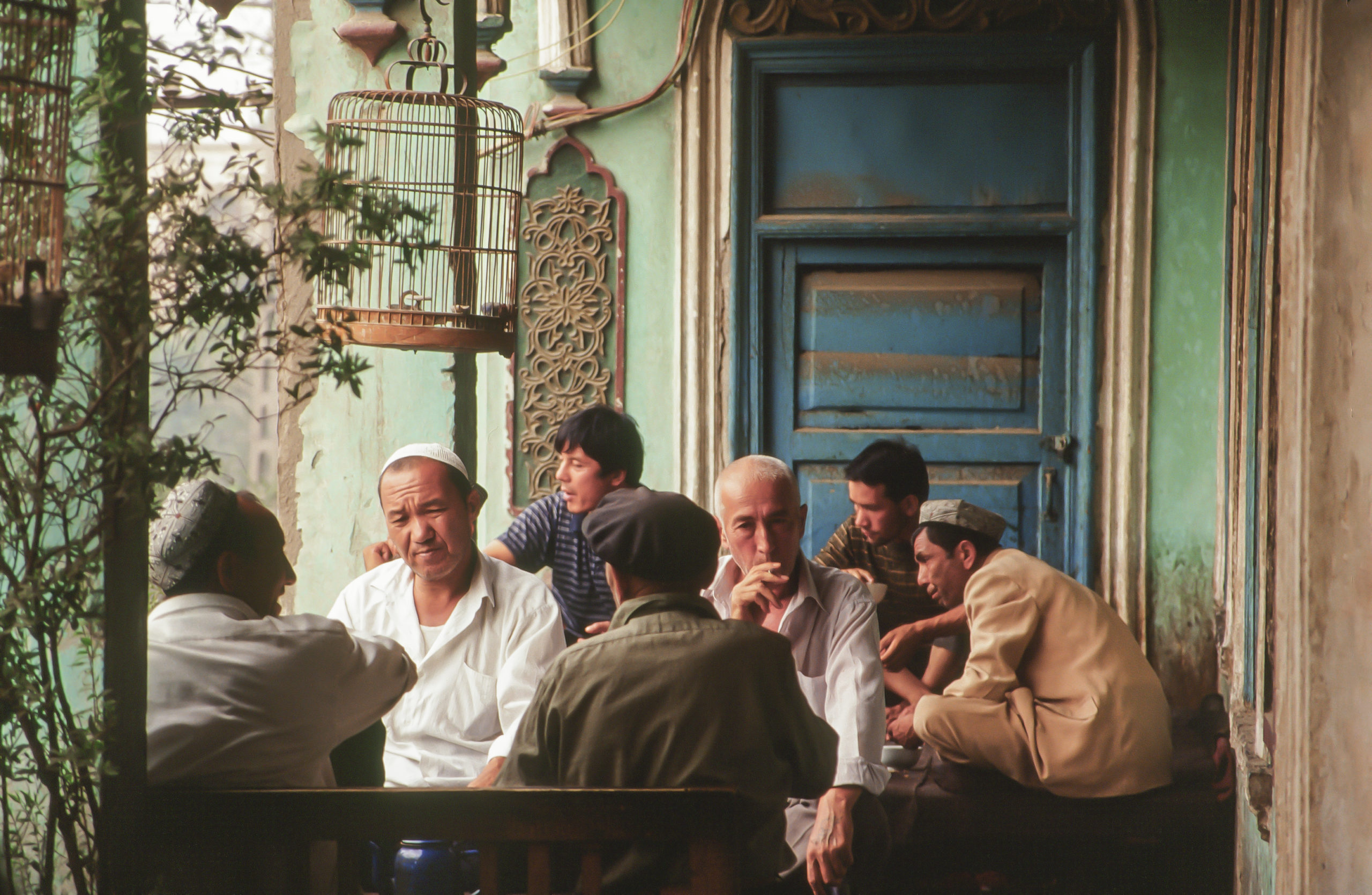
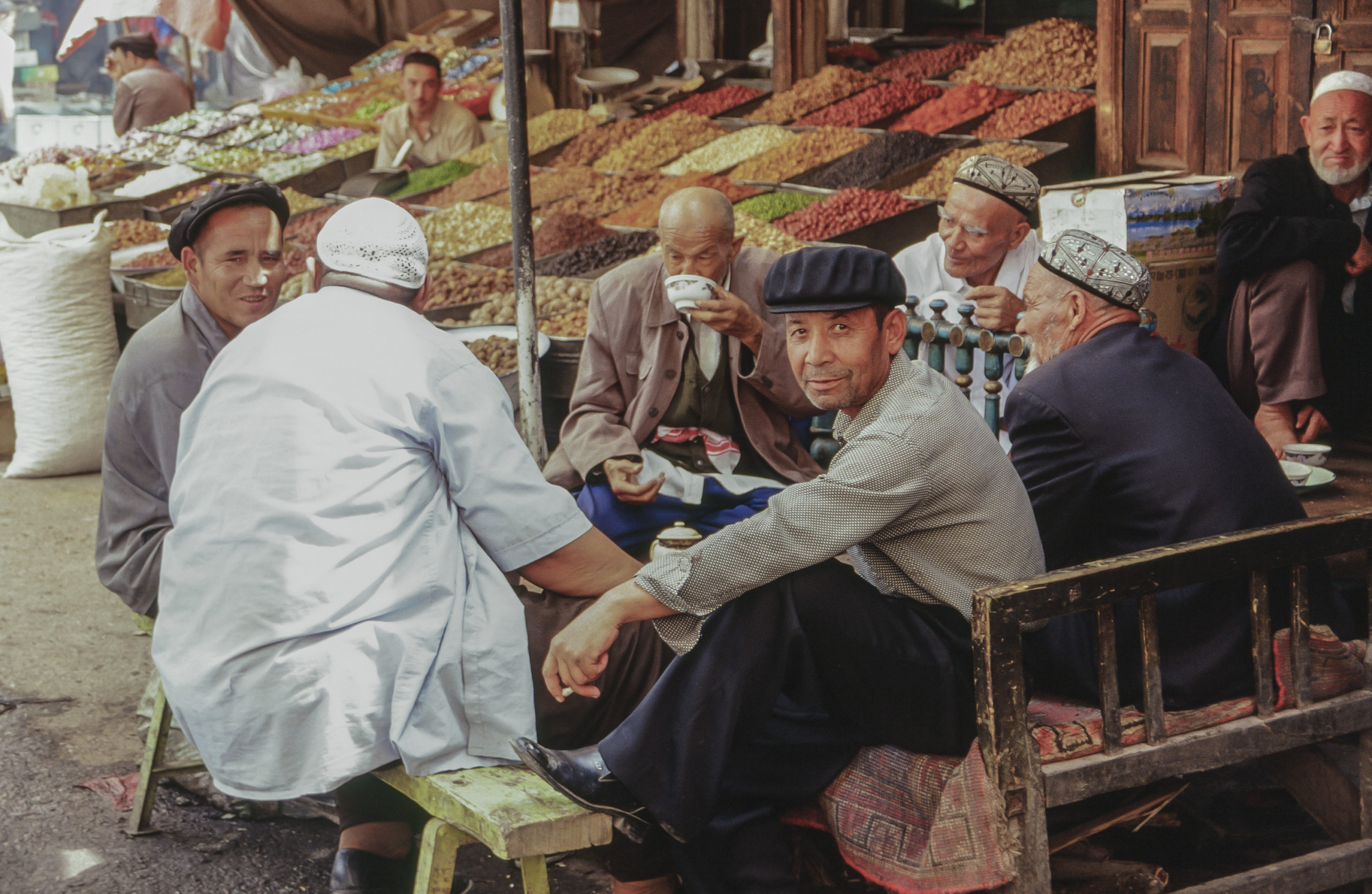
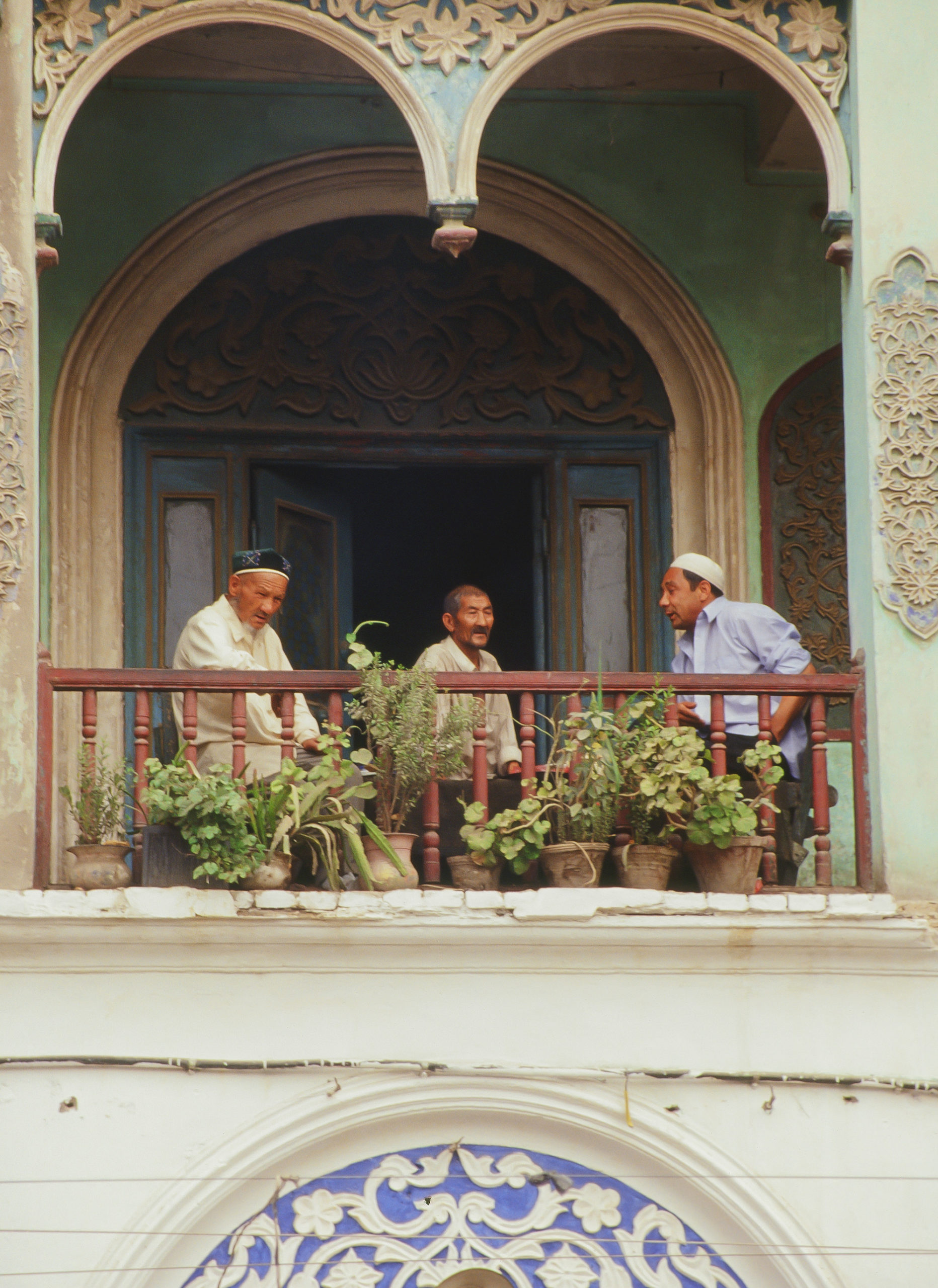
Top left and right: Uyghur men sit talking at a chaykhana, or teahouse, in the old city. Bottom left: Uyghur men gather and chat on a platform bed outside a market stand in the old city.
Elderly men sat chatting in front of their shops; some met in . The old chaykhana to the southeast of Id Kah, which overlooked a small market place, seemed to be a popular meeting place.
On the weekend, People's Park, across the street from a statue of Mao Zedong on People's Square, was a recreational attraction. Couples and families rented carpets and organized picnics and gatherings with music and dance in tree-covered areas and along the creeks of the park.
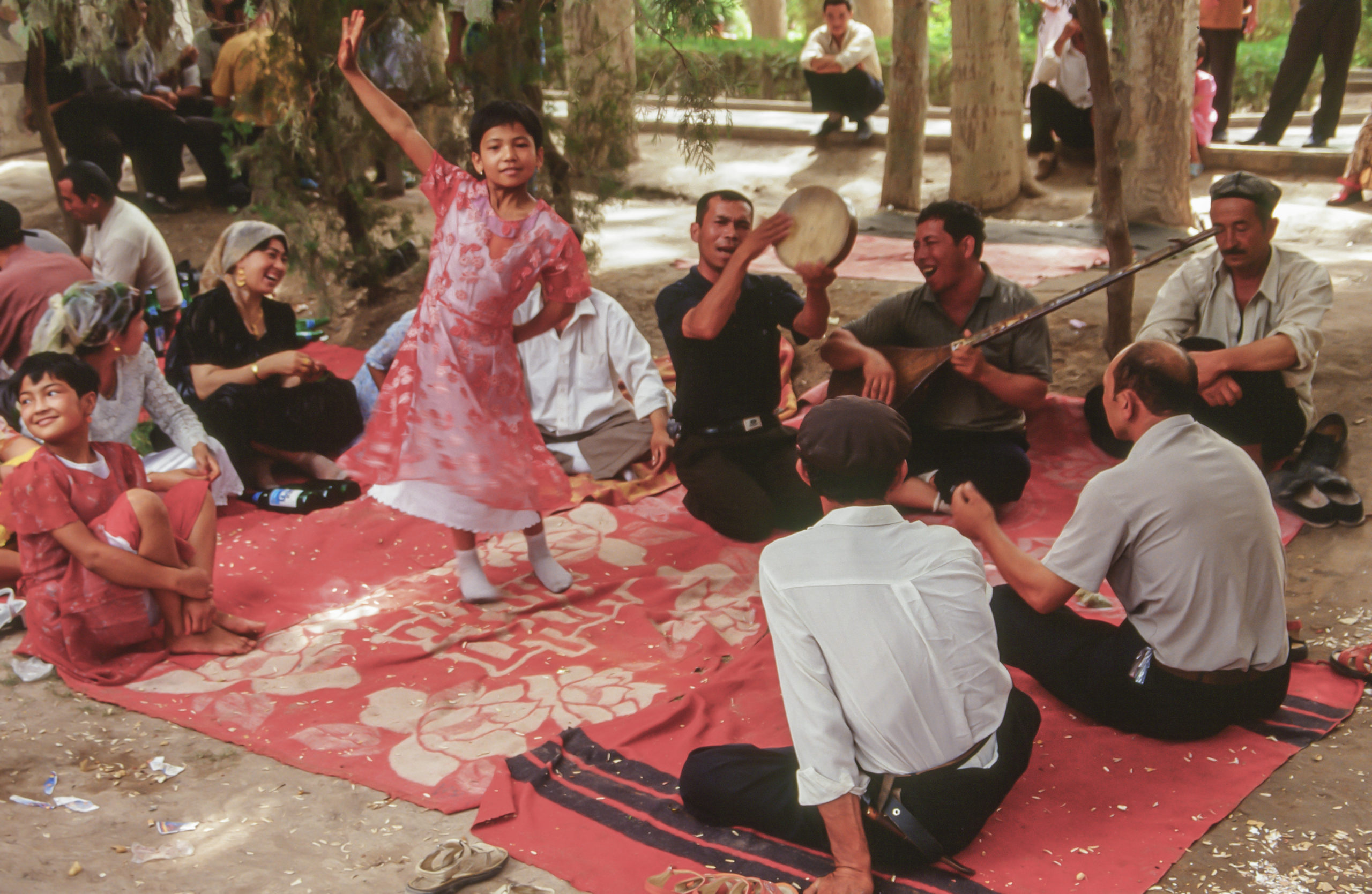
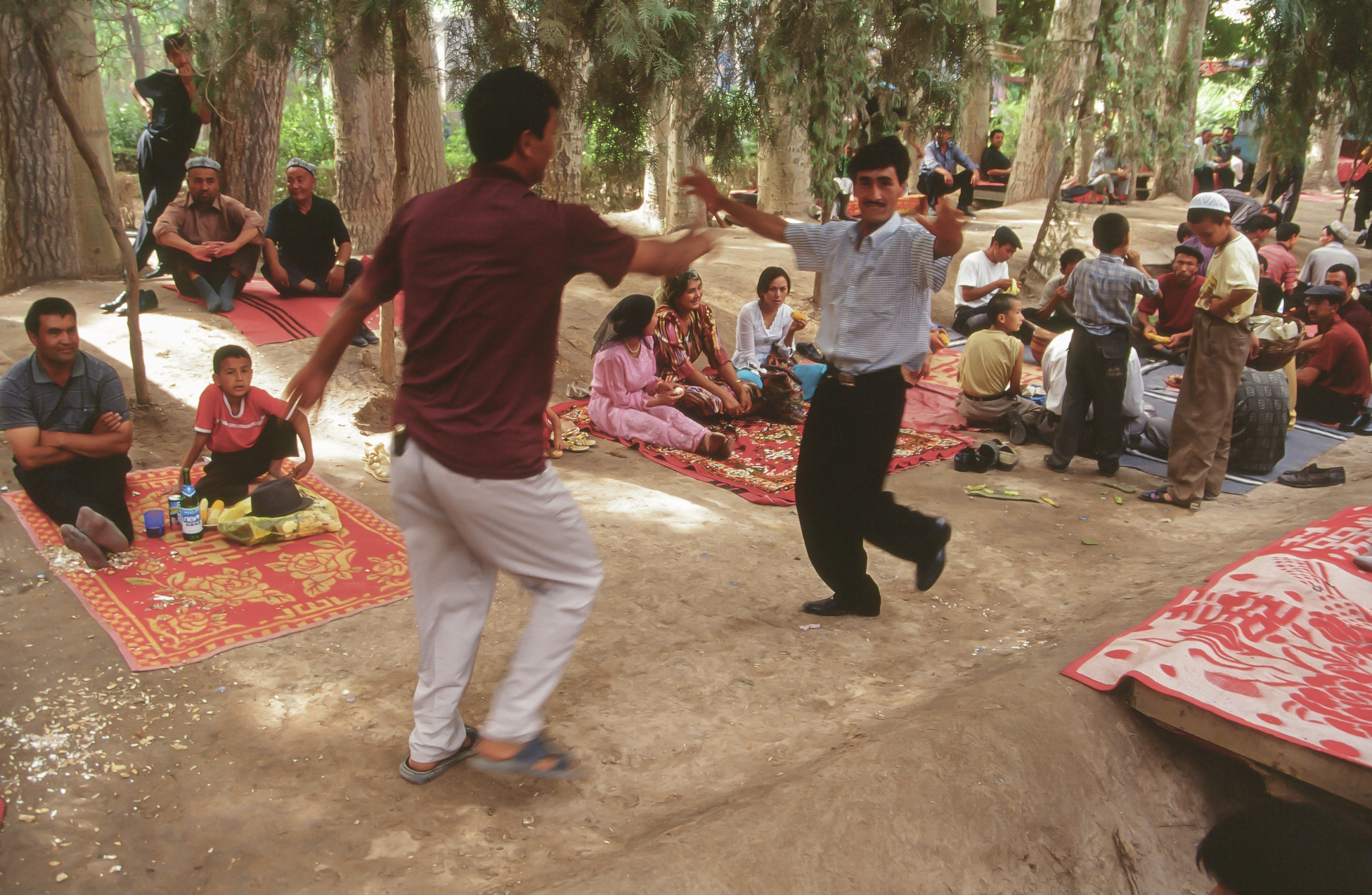
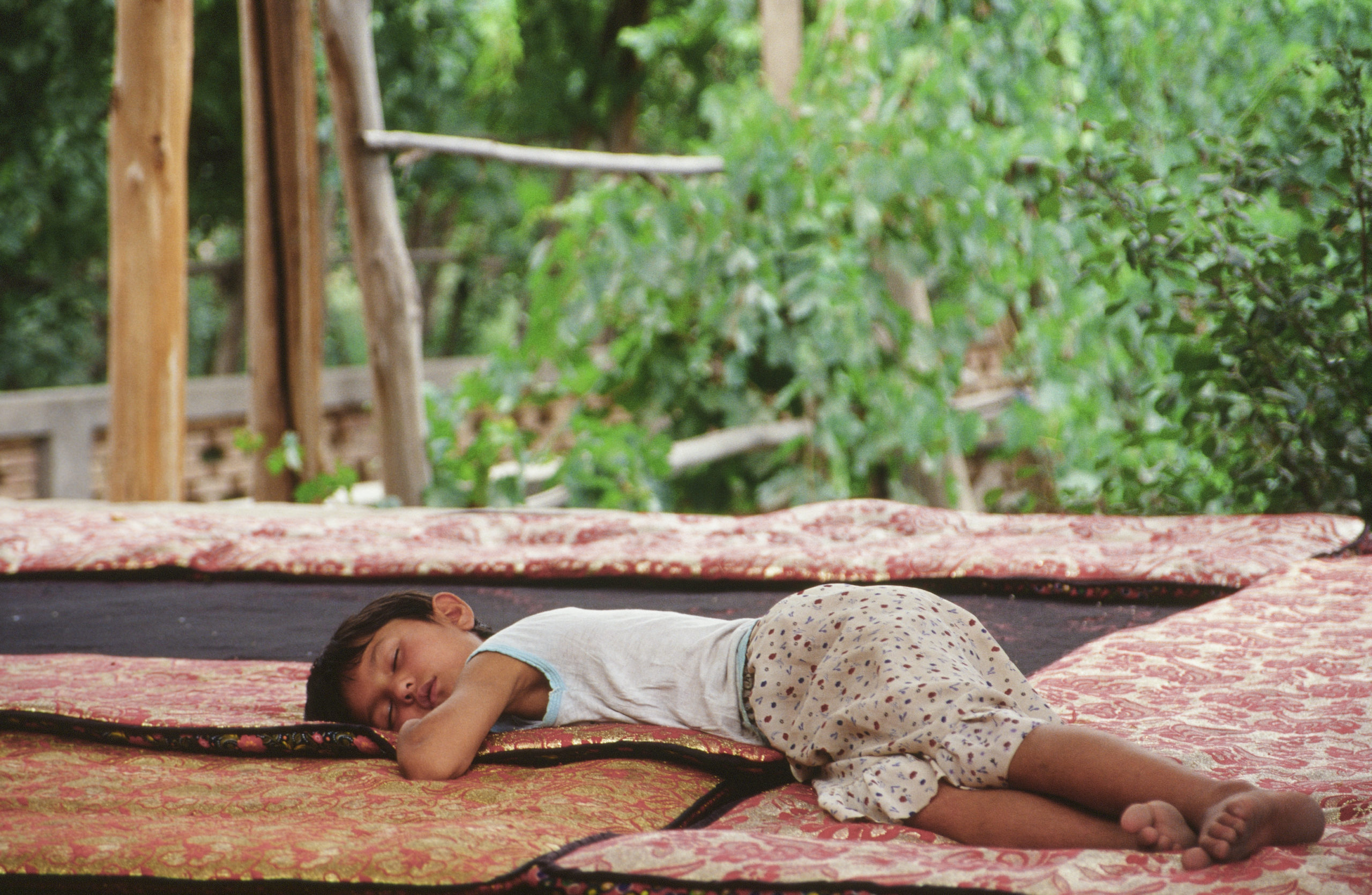
Top: Uyghur residents residents gather with music and dance in People's Park. Bottom: a young child naps on körpes, or sleeping mats, in the park.
Kashgar Memories: Memet Sawut
These photographs were taken in the period when large-scale destruction started in Kashgar. It hurts to see some of the images. Kashgar has a history of at least 2000 years, even longer than Moscow. The push to demolish and "renew" old sites around the city was heart-rending for Uyghurs. Some families had been living here for at least 600 years when they were forced out.
They’ve changed [Kashgar] into a Chinese theme park. The demolition of Kashgar's old-city districts is tantamount to the destruction and demolition of Uyghur culture itself.
The demolition of homes and other places inside the seven city gates was especially depressing. These places should have been preserved according to UN regulations for cultural relics. They were demolished beginning in 2003; the demolitions reached a climax in 2008 and 2009. Afterward, the government demolished even more of Kashgar, and now they have made it into an entirely different place. They’ve changed it into a Chinese theme park. The demolition of Kashgar's old-city districts is tantamount to the destruction and demolition of Uyghur culture itself.

Bazaars Under Pressure
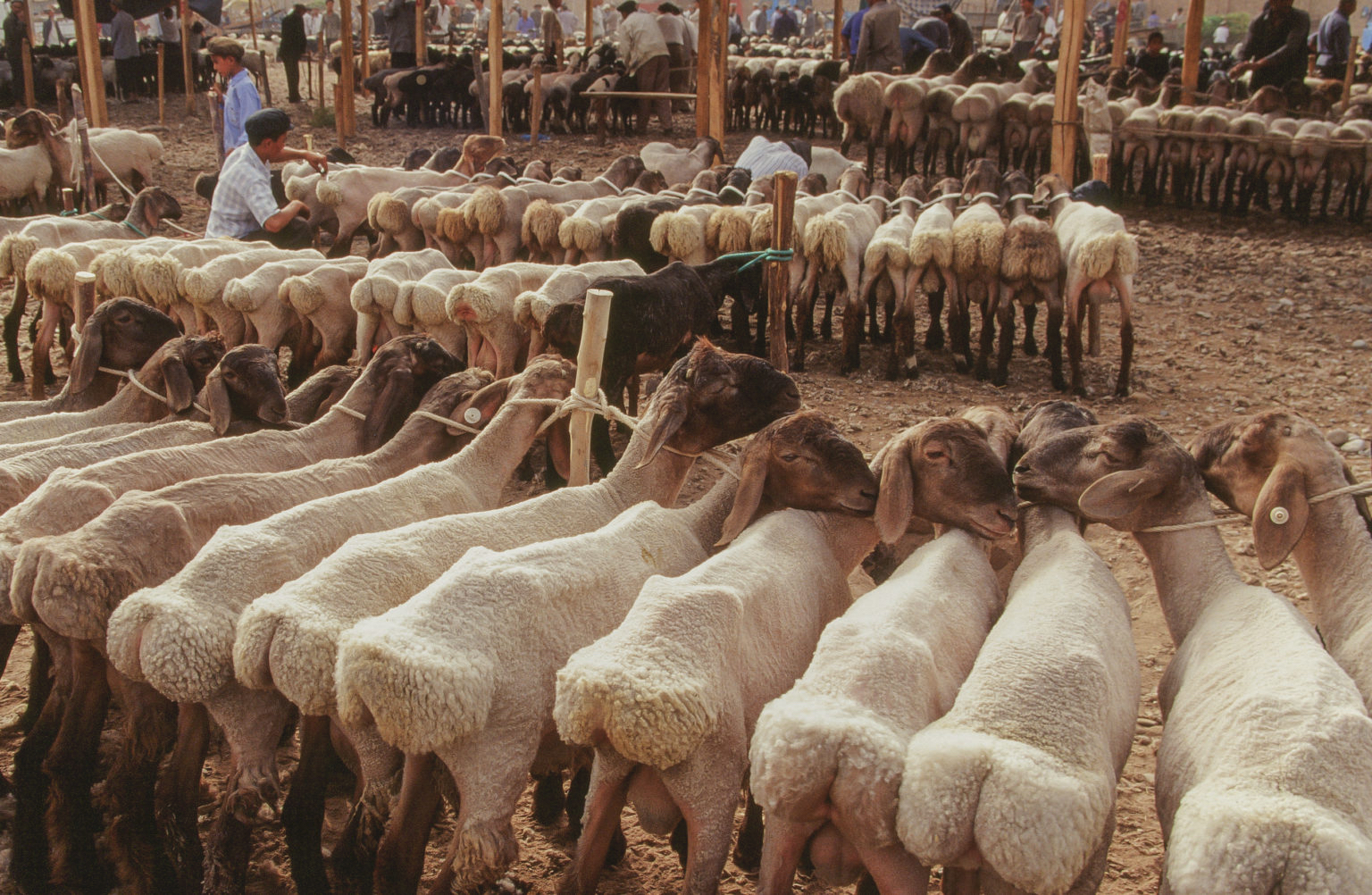
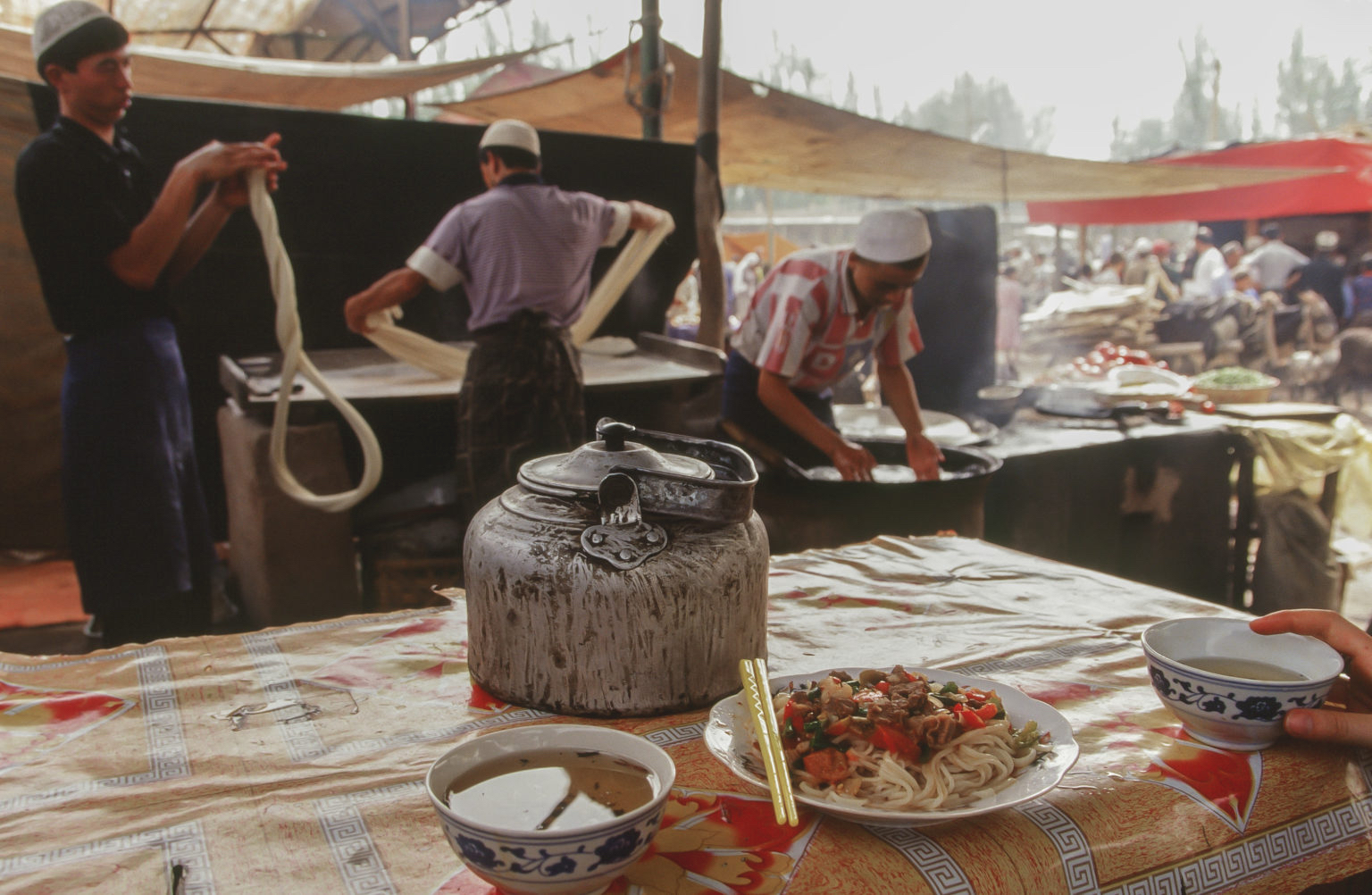
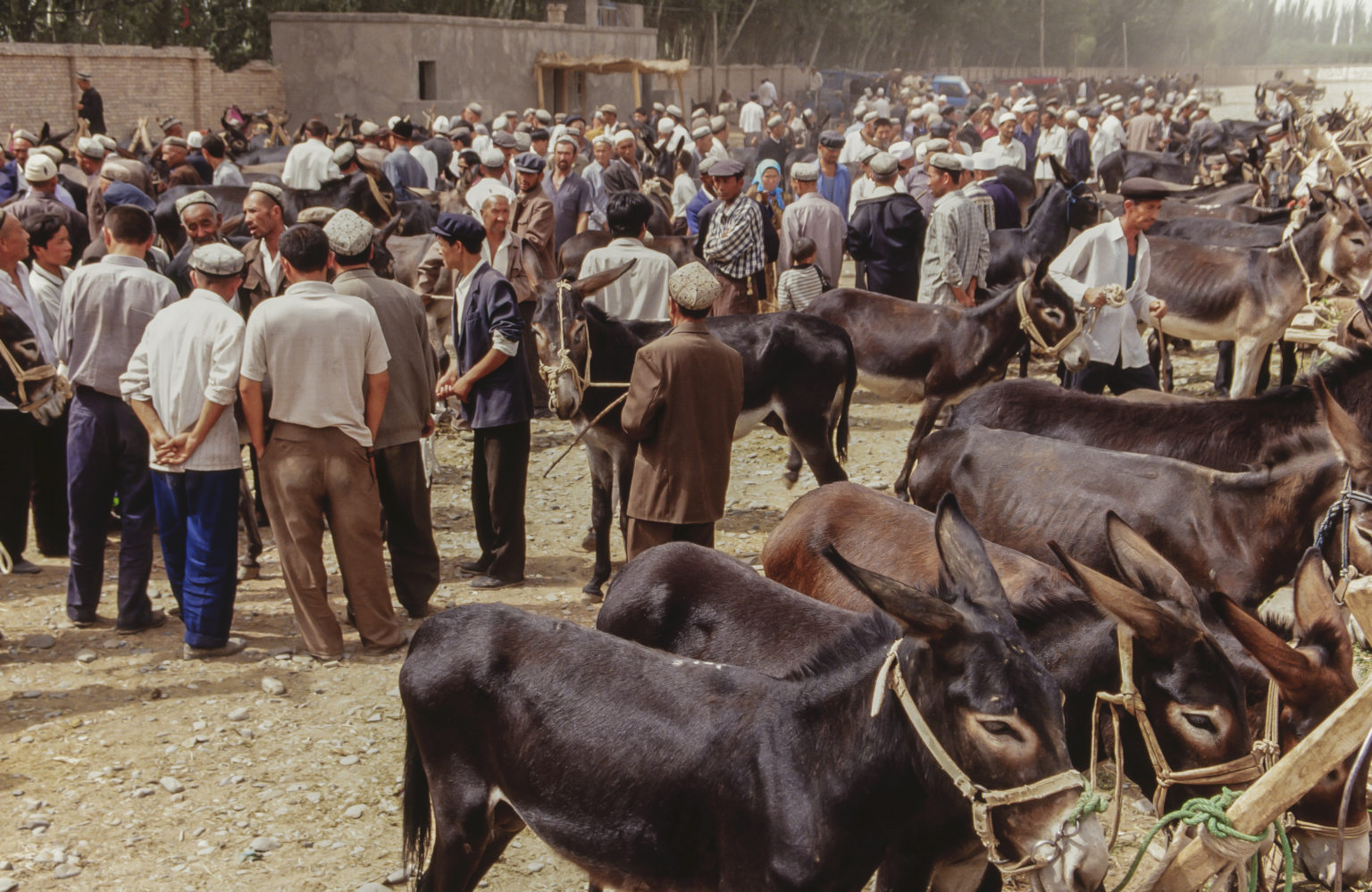
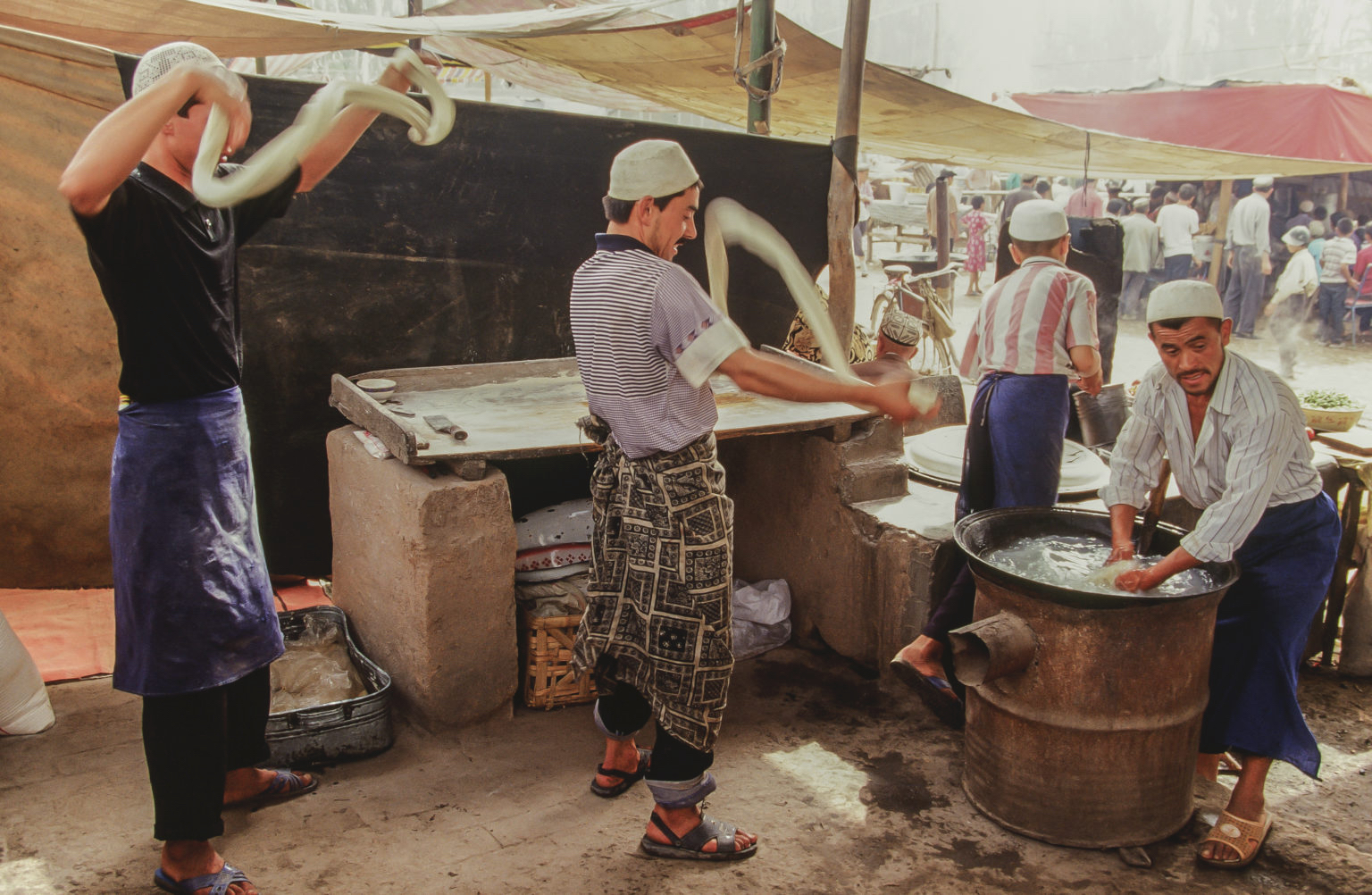
Scenes from the Sunday livestock bazaar on the outskirts of the city.
In 2003, the Sunday bazaar was downsized and reorganized. The livestock market had already been moved outside the city limits and had changed location several times. Farmers arrived to the livestock market outside town on pony carts, bikes, and motorcycles, mingling and haggling for horses, donkeys, sheep, and goats.
Farmers arrived to the livestock market outside town on pony carts, bikes, and motorcycles, mingling and haggling for horses, donkeys, sheep, and goats.
Weekday market areas inside the old city continued to be crowded with people, bicycles, delivery vans full of melons, market stalls with vegetables, and meat and food stalls with smoky grills, a sign that life as Uyghurs knew it was not fully changed.
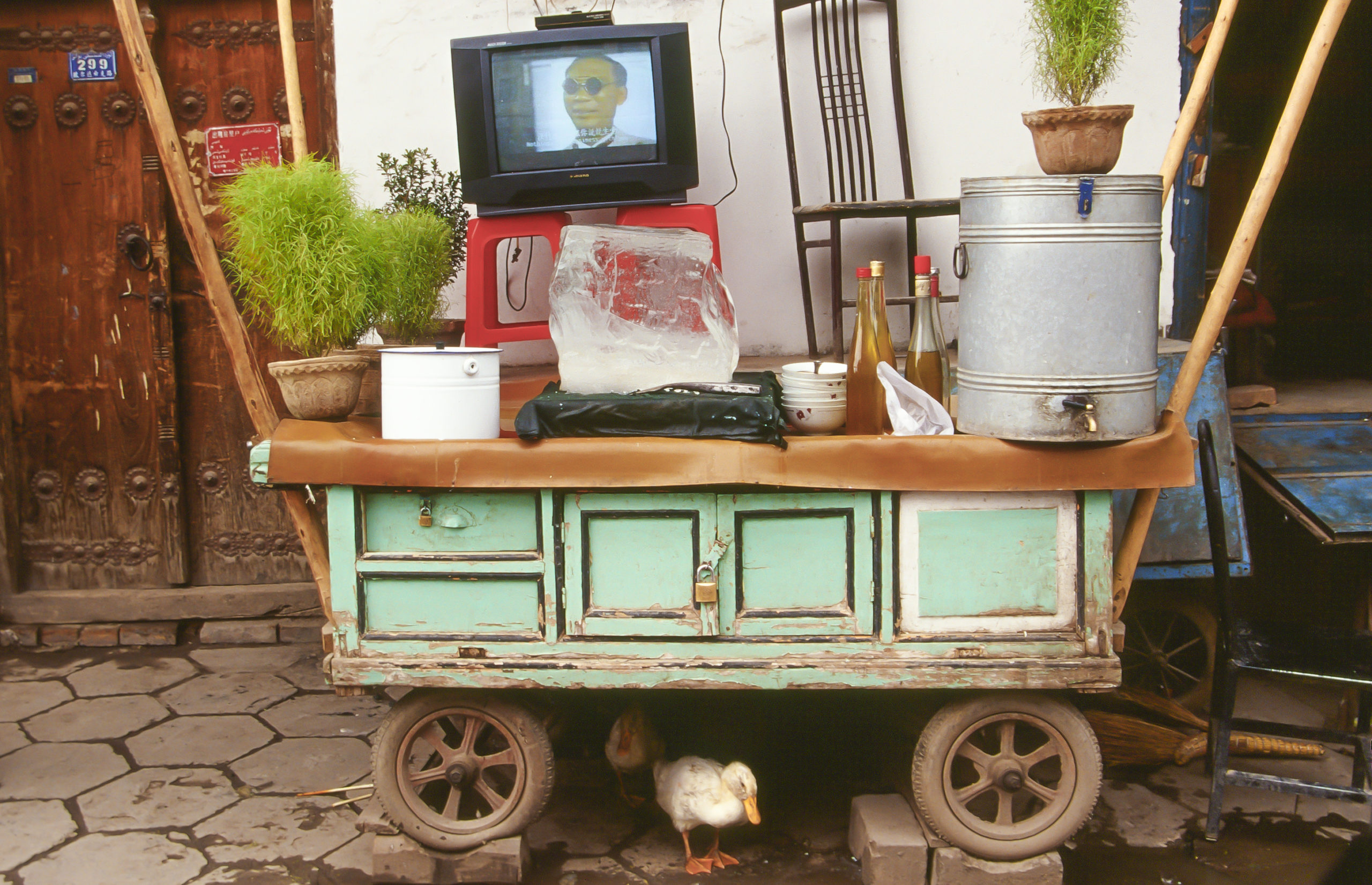
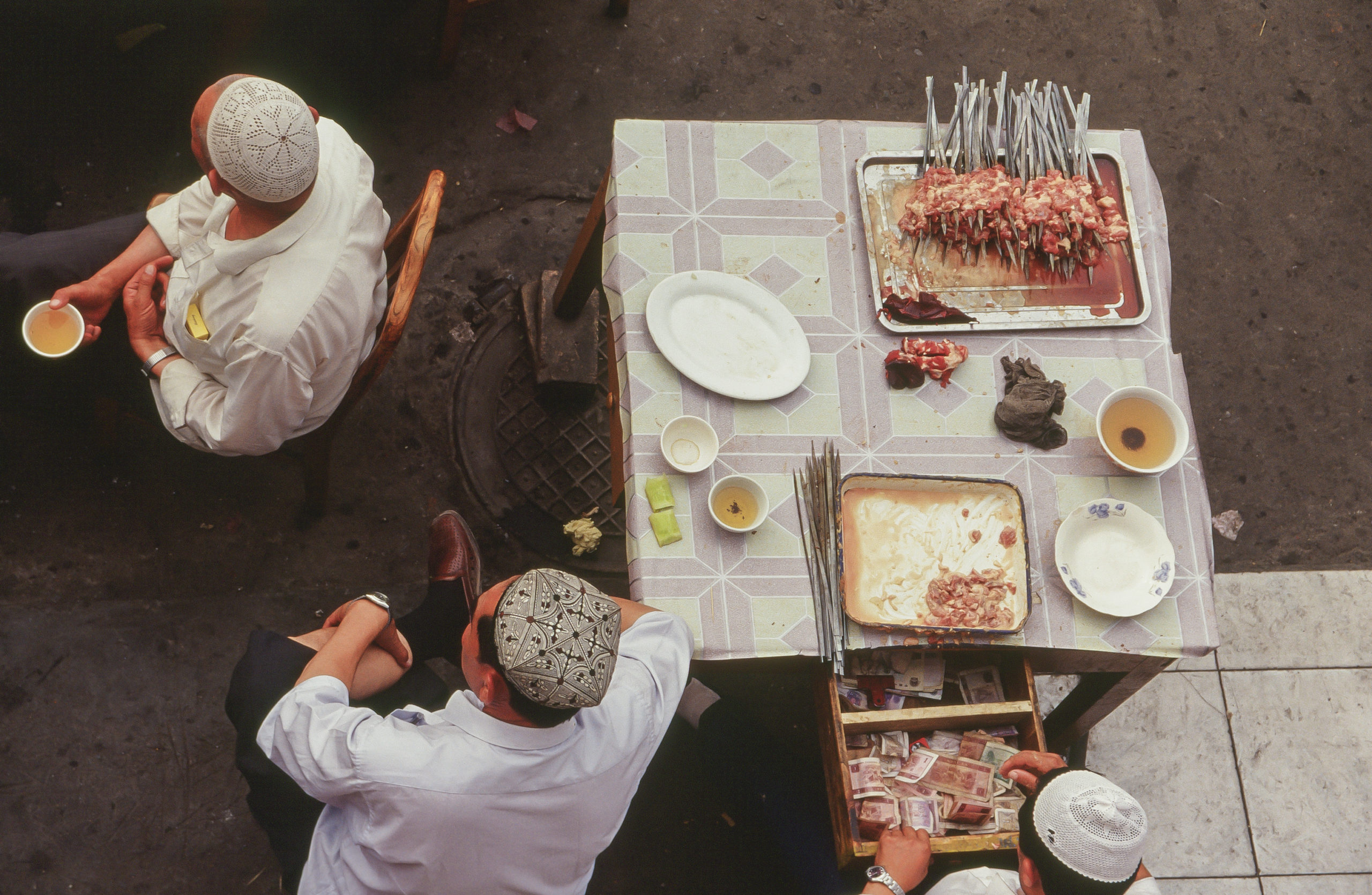
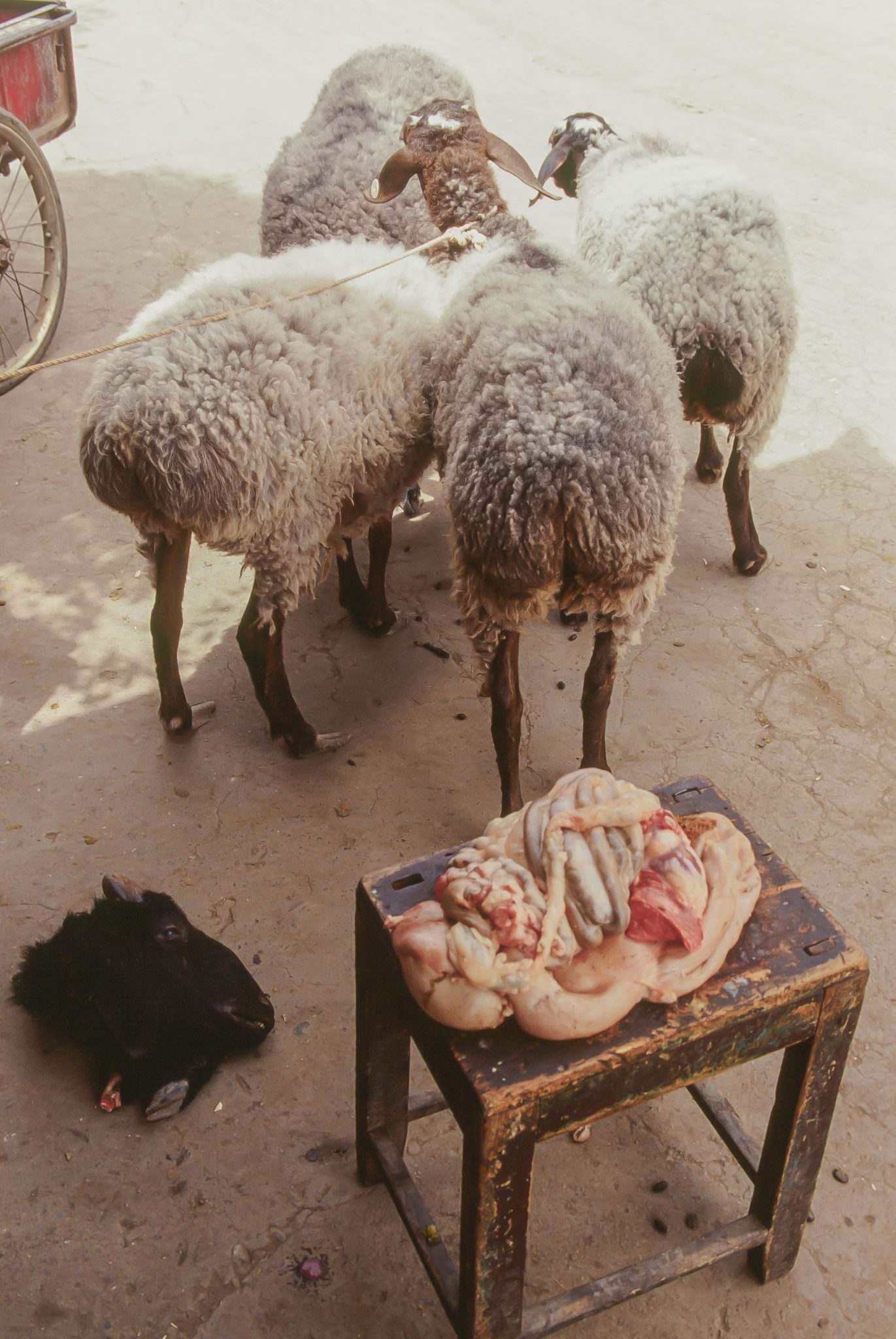
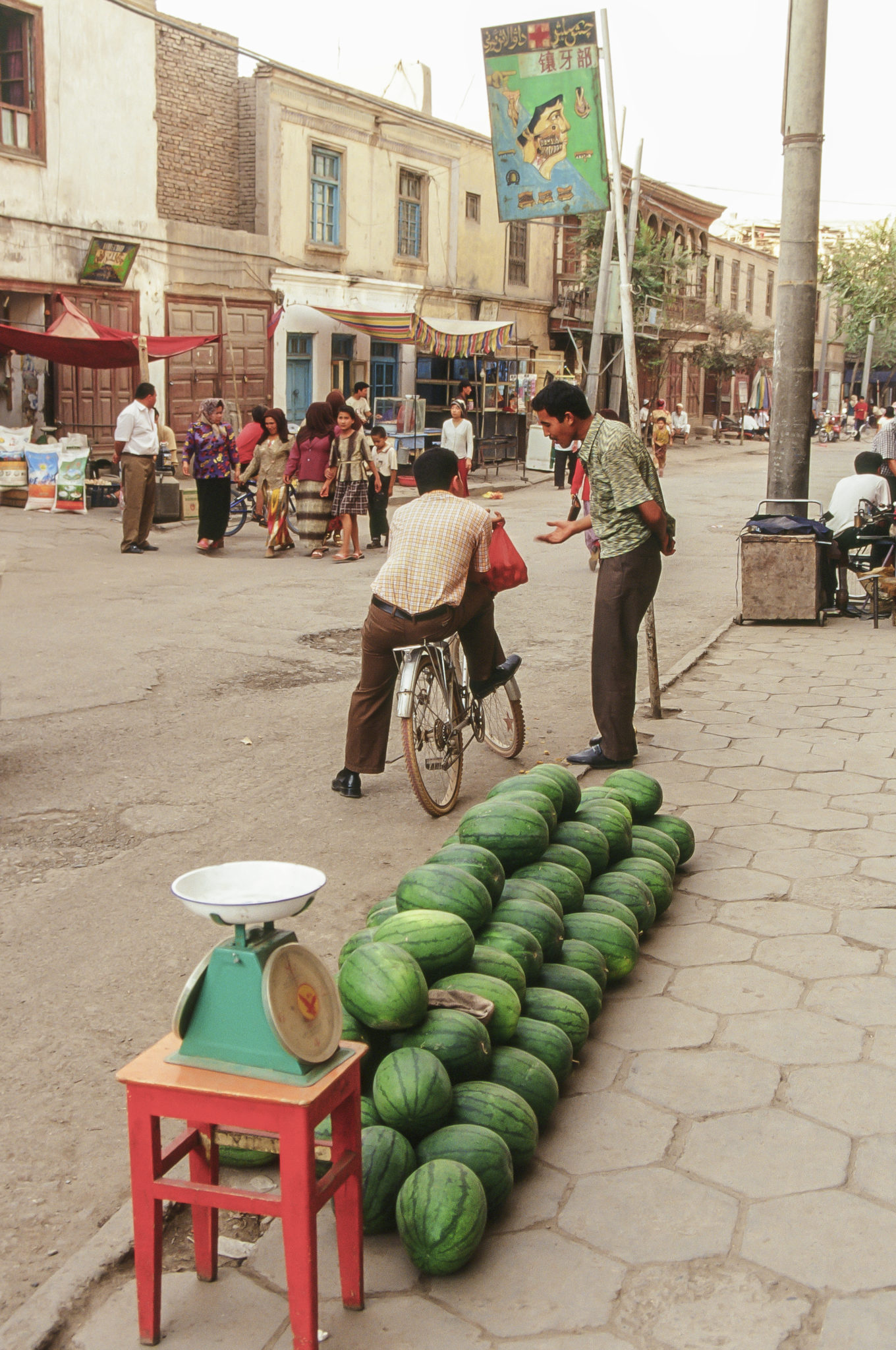
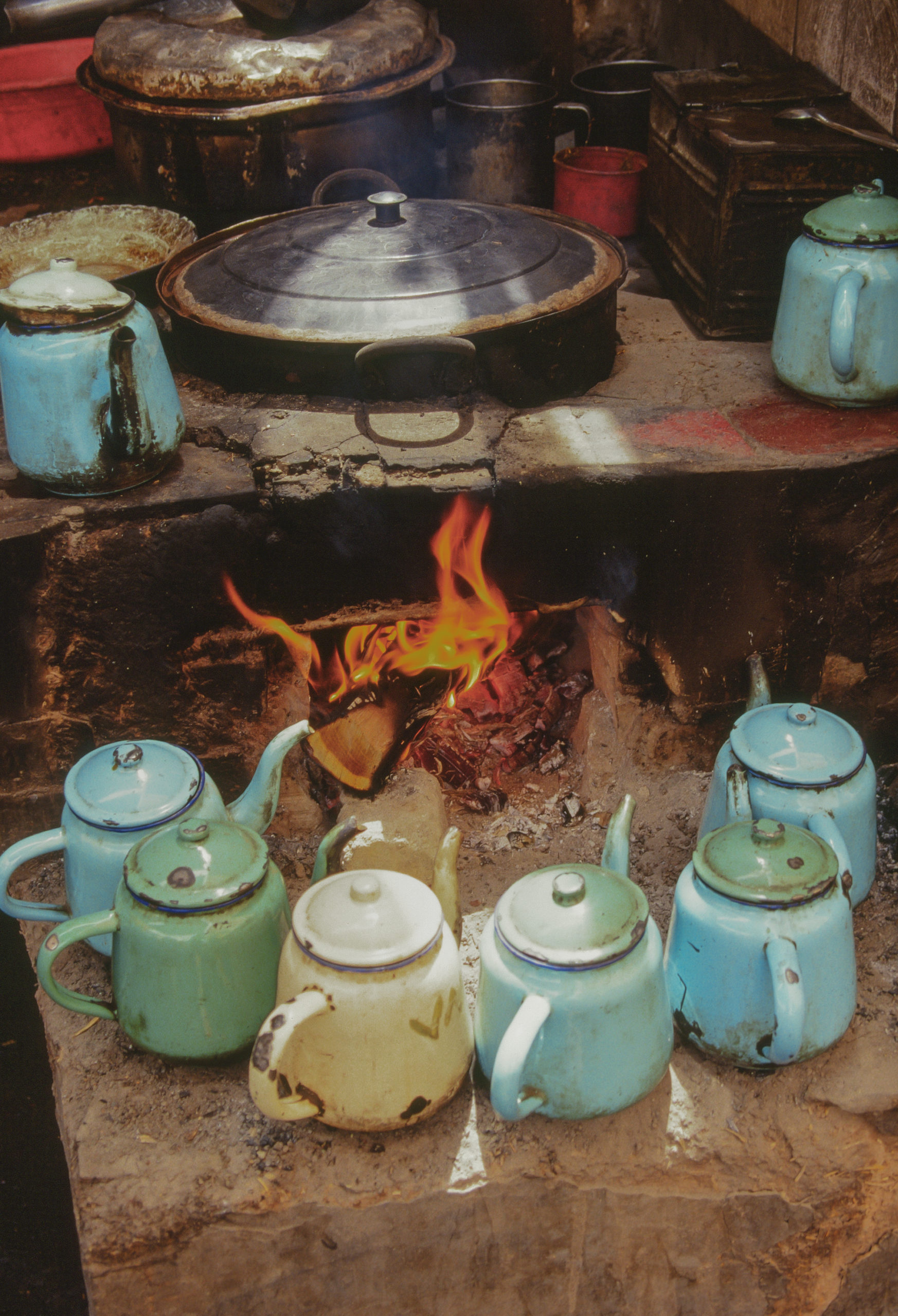
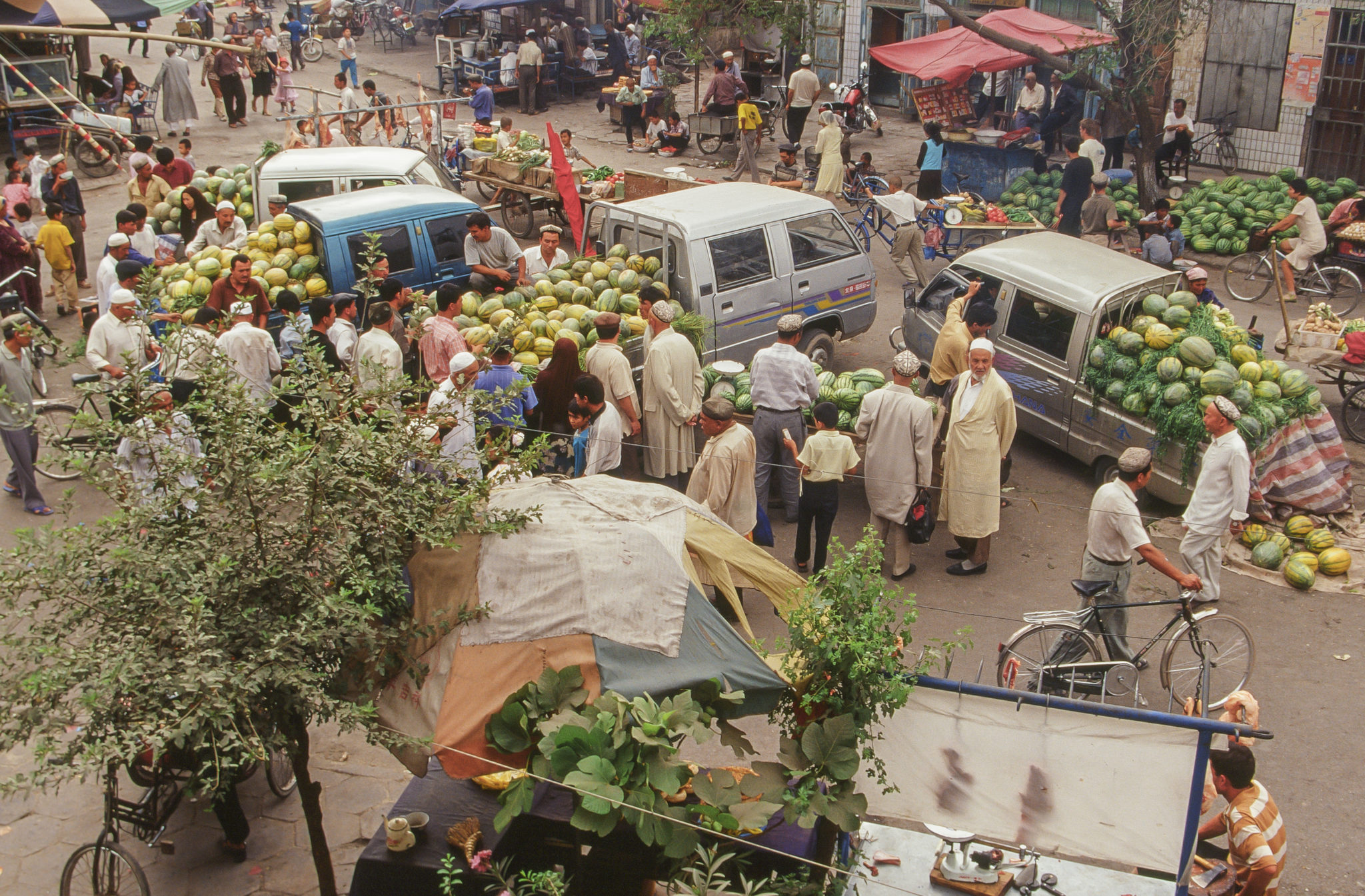
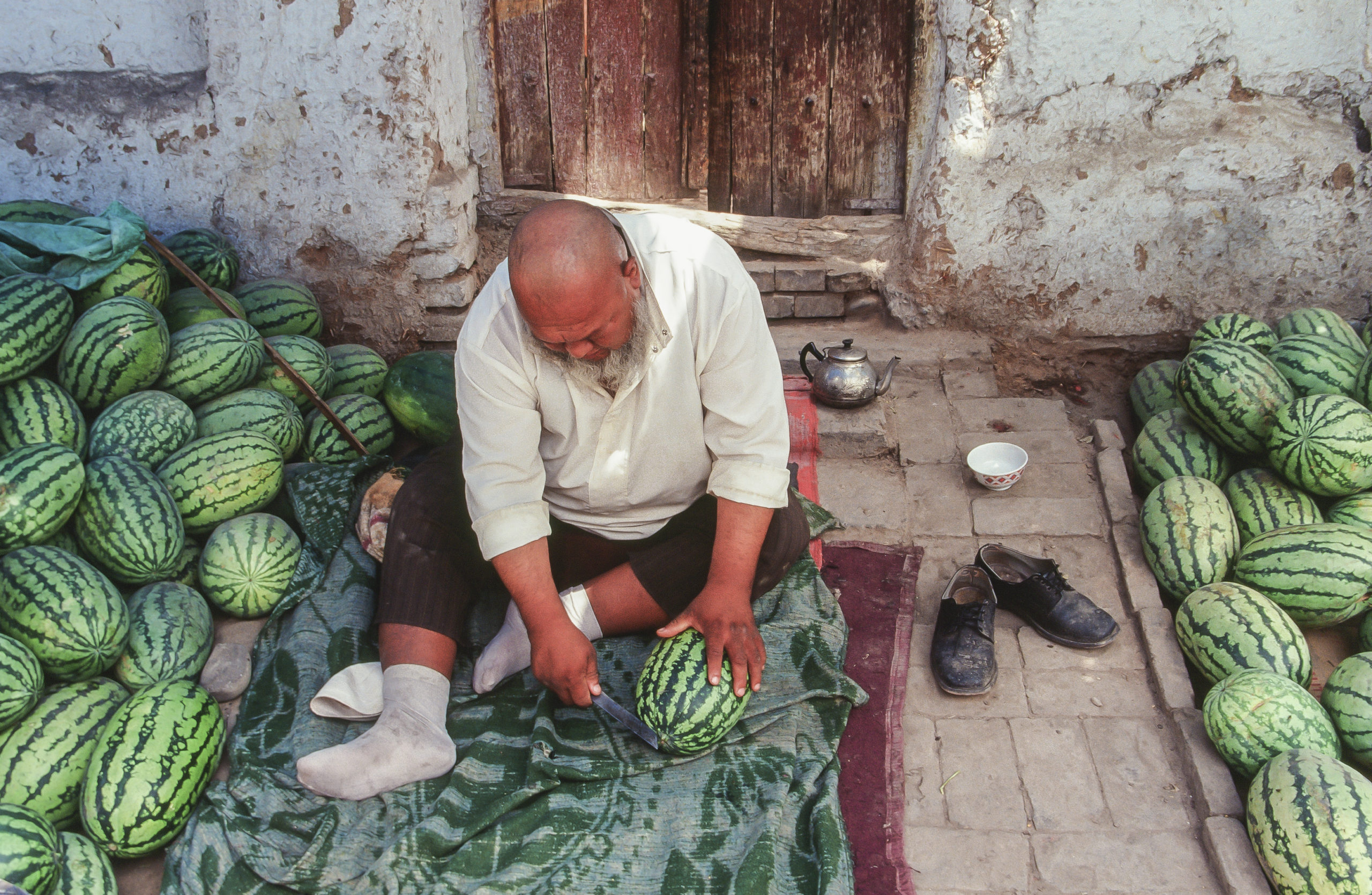
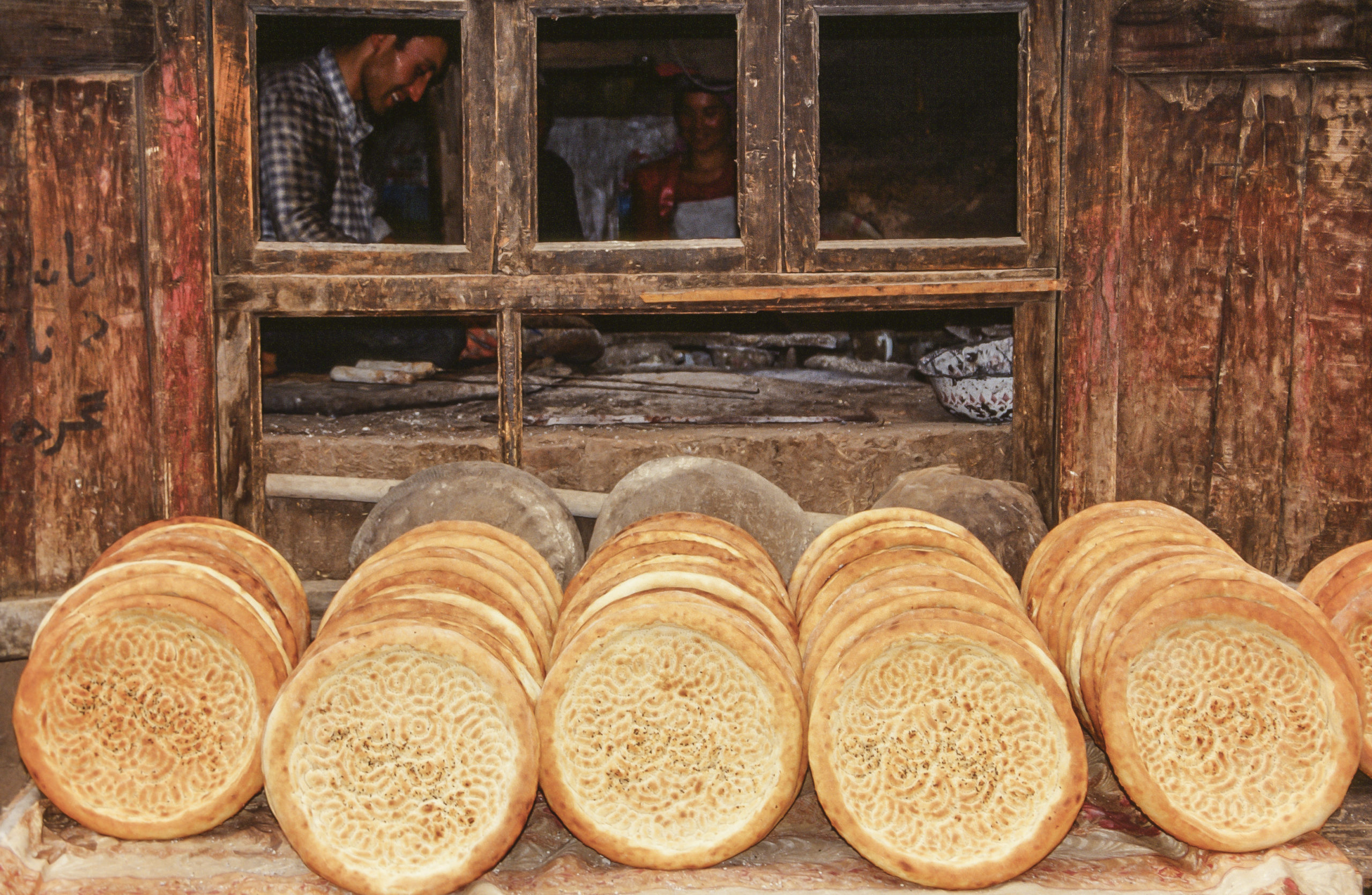
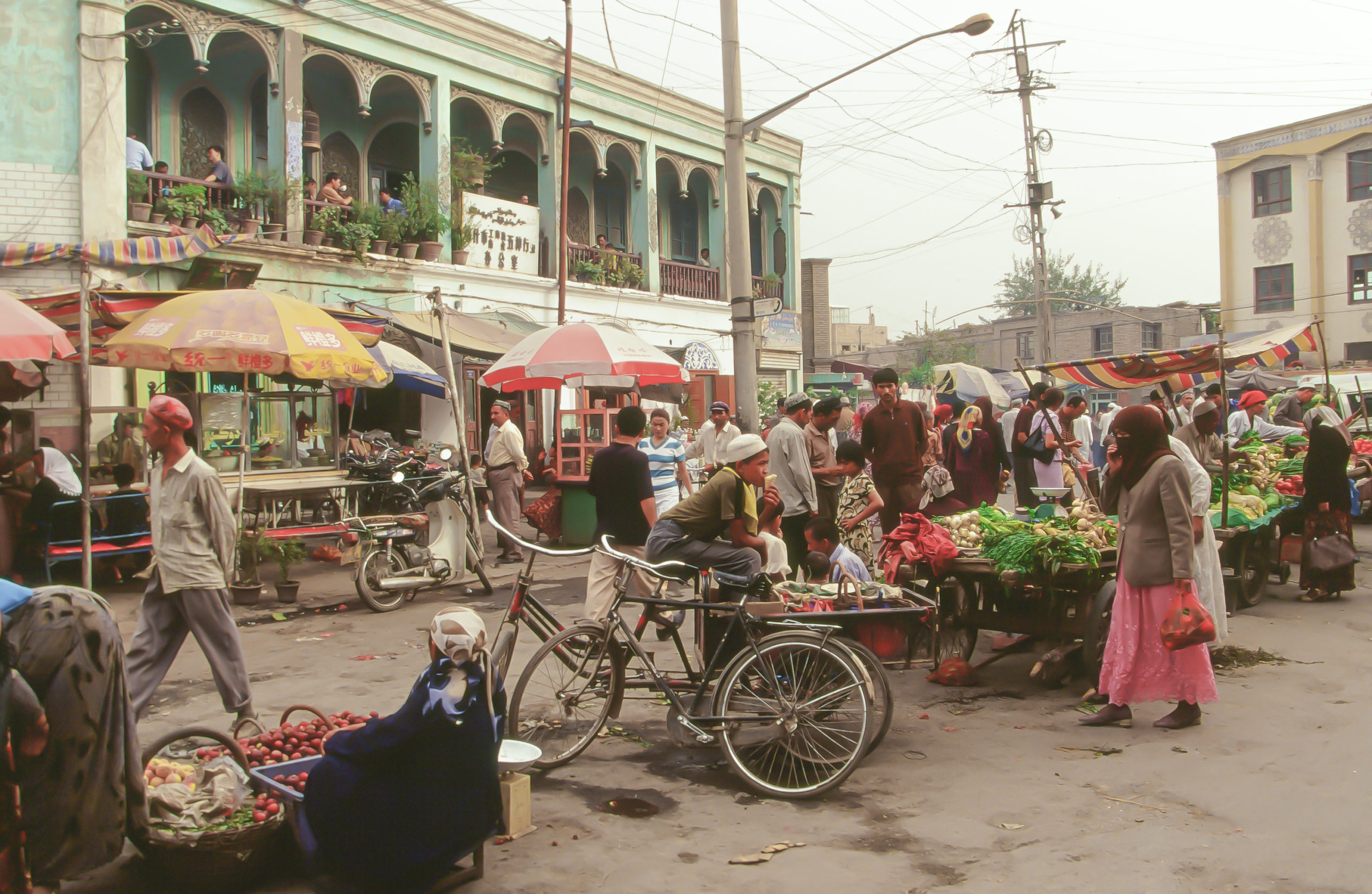
Scenes from a lively weekday market in Kashgar's old city.
Kashgar Memories: Ihtibar Yasen
Some photos in this collection remind me of the Kashgar I knew in the late 1980s and 1990s. The sand-colored jackets the women are wearing, the shoes on their feet, the bikes—I remember them all. I also remember the thick brown netted head coverings some women are wearing. My female relatives on my mother’s side—my uncles’ wives, the women who married into our family—were all housewives, and they also wore those head coverings and long dresses when they went out in public.
Some of the photos show scenes from a small bazaar. There were bazaars like this in different neighborhoods, as well as outside the city, even on weekdays. People from the villages would bring vegetables to sell would be stuffed into the backs of trucks and brought in from Peyziwat county. Everything looked new.
I remember my family members were always going out to buy the ingredients for a single meal at a time. Refrigerators were new to Kashgar in the 1980s, so people didn't have them at home yet. When people went to the neighborhood bazaar, it was to buy fresh meat and vegetables to cook with that day. Everyone did this. I remember that if you went and said you needed ingredients for laghman for an entire family, there were sellers who would bag up all the vegetables you needed for that single meal. When we were small our parents would send out us to do the shopping. They’d put money in our hands and tell us to hold it tight, and they would instruct us what to buy and what not to buy. I learned never to buy soft radishes and always to buy smooth potatoes.
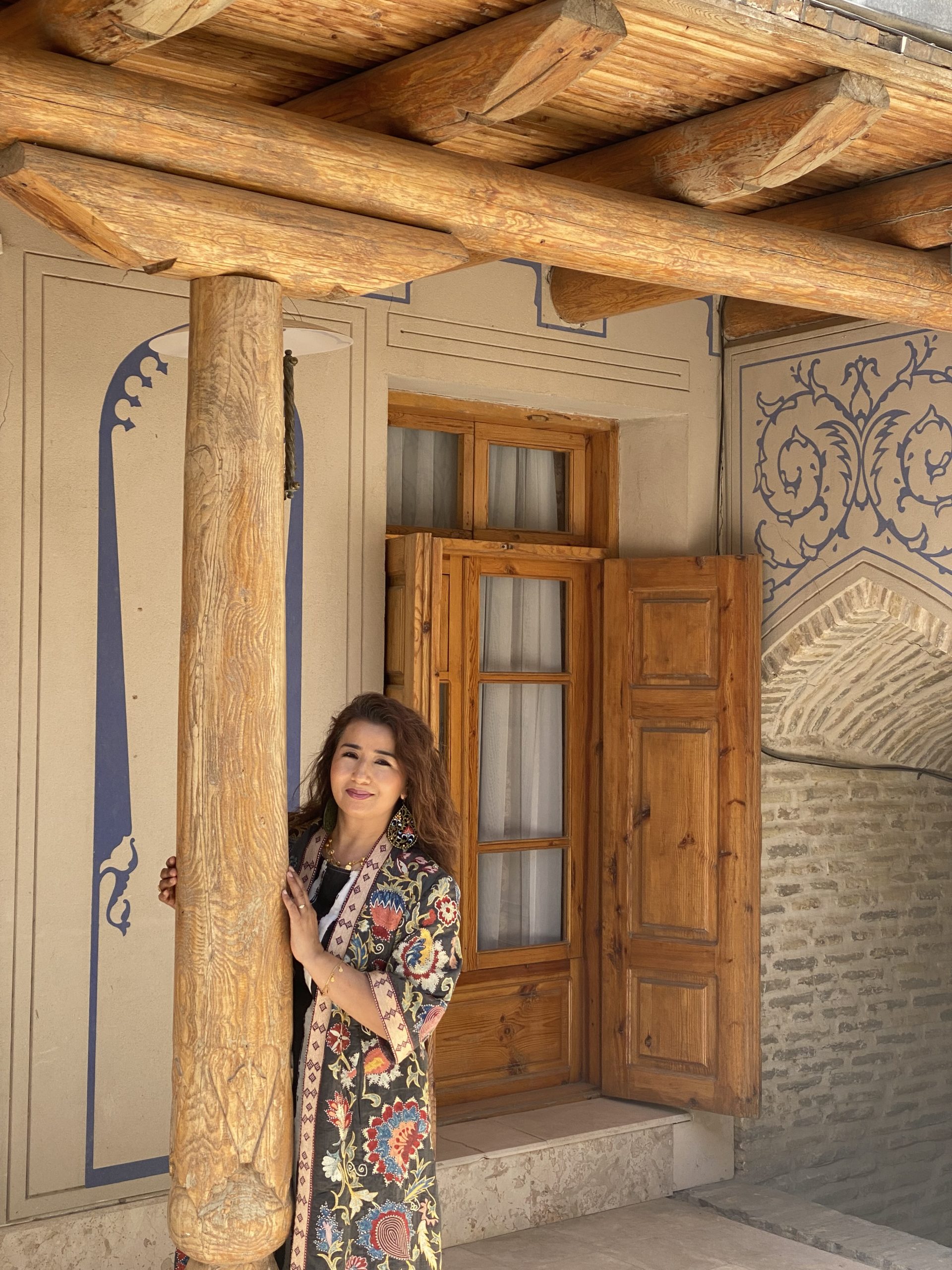
The End of Kashgar?
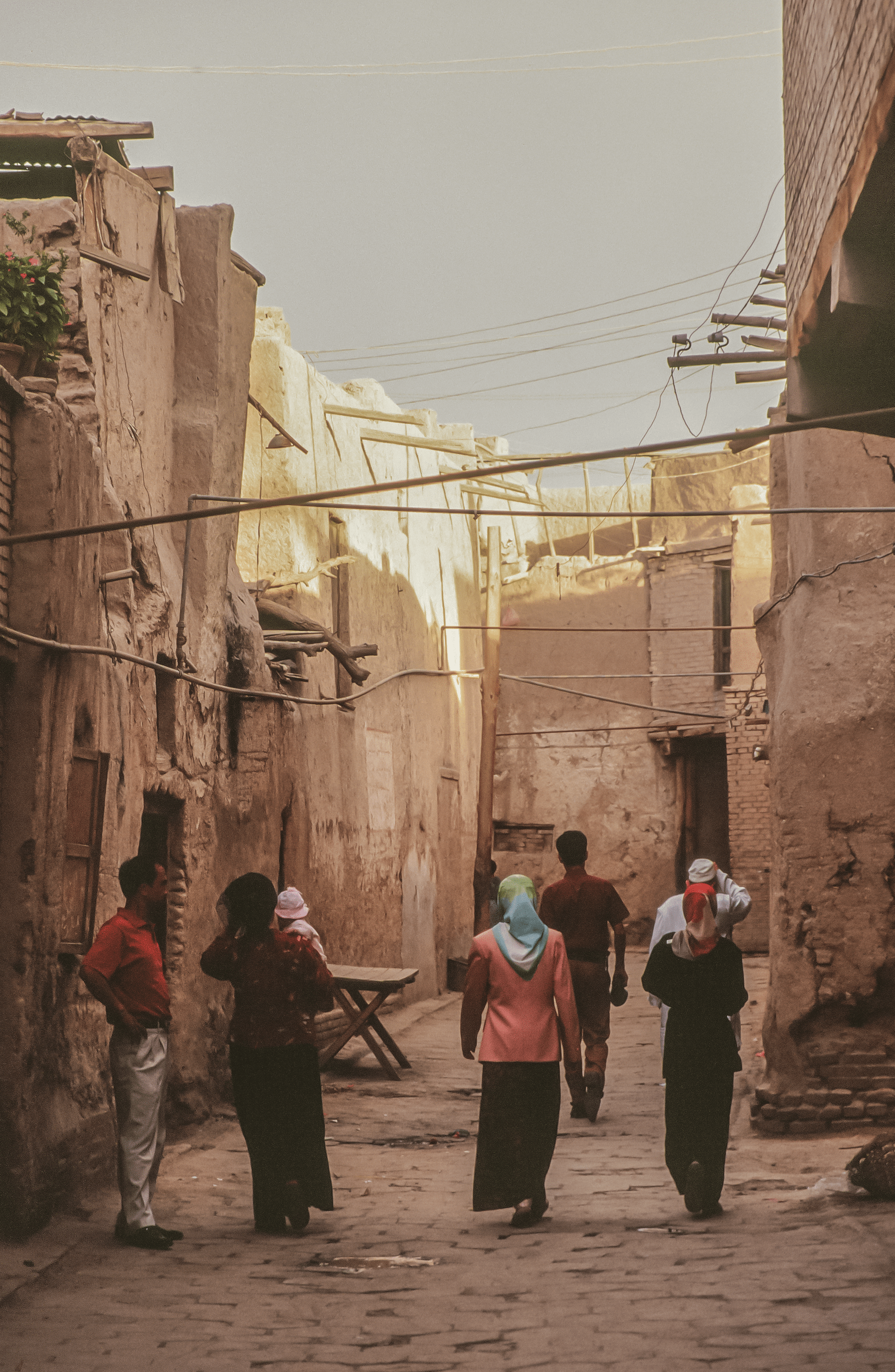
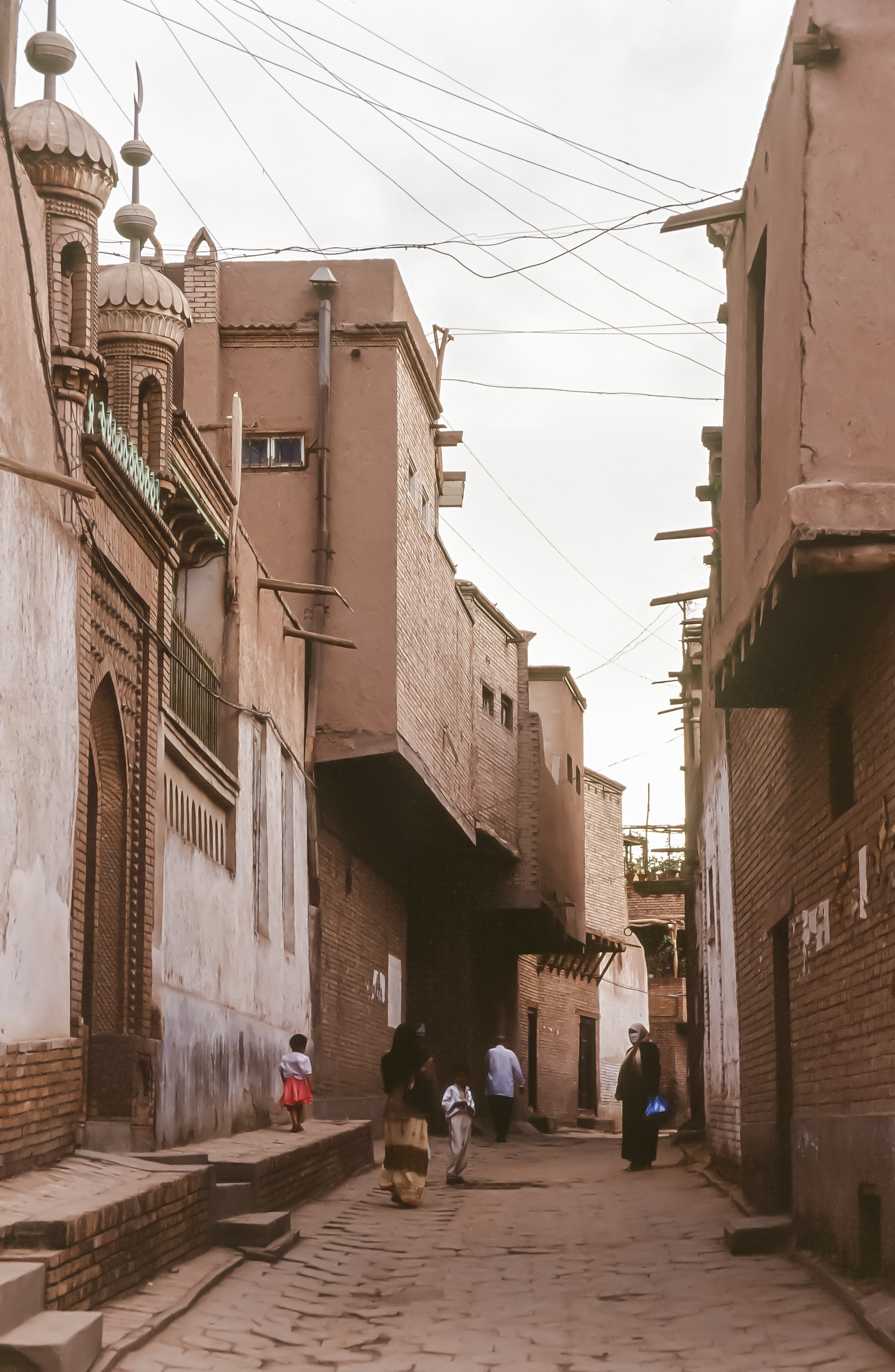
Images from Kozichiyar Béshi, one of the last untouched sections of the old city in 2003.
In 2003, one area in the old city remained largely untouched by demolition and reconstruction: the area east of Id Kah, between Liberation Road, the east gate, and the Tümen river, known in Uyghur as Kozichiyar Béshi. The with their small mosques; the narrow, winding, shady alleys; the multistoried, interconnected adobe houses; bright courtyards with their own cooling and heating systems. The old city retained a certain autonomy from the surrounding city. The alleyways were difficult for outsiders to understand, and they seemed to evade control.
In 2009, this portion of the old city would become the target of the next and largest demolition, resettlement, and reconstruction campaign of the Chinese Party-state in Kashgar. Carried out with heavy involvement of police and security forces, by 2012 the campaign had affected almost 90% of the old city, tens of thousands of Uyghur households. In hindsight, the events of 2003 were only a prelude to decades of state-led demolition that were to follow—as well as to policies that several governments and an independent tribunal have now recognized as genocidal.
As of 2022, the state-led destruction and replacement of Kashgar show no signs of stopping. The Party-state continues to invest heavily in developing the city into a site for domestic and international tourism while enacting violent policies against the Uyghur people, further marginalizing their place in the cradle of Uyghur culture.
Demolition and Replacement in Kashgar, 1980–2015
1980s
The city moat is paved to create a ring road, and a main street is opened through the center of the old city.
2000
The Great Western Development Drive is launched.
2001
Thousands of relocations take place in a “redevelopment” of the old city and area around Id Kah.
2002–2003
The bazaar in front of Id Kah is demolished: the square in front of the mosque is opened up and enlarged, and modern commercial buildings are built around it.
2005
Sections of the old city wall are destroyed.
2008
The “Comprehensive Plan for the Management and Protection of Dilapidated Houses in the Old City of Kashgar” is finalized, affecting eight square kilometers and over 200,000 people, approximately half the population of Kashgar.
2009
Large-scale demolitions of the Old City begin in February under the pretense of “earthquake-proofing” structures, and officials set a target of demolishing 85% of the old city.
2010
An official media report from March states that the initial “pilot project,” under which demolitions were carried out in five neighborhoods in the Old City in 2009, will be significantly broadened in 2010.
In the same year, Kashgar is “paired” with Shenzhen after announcement of the pairing program at the Xinjiang Work Conference in March.
2012
On January 17, Shanghai, Shenzhen, Guangdong province, and Shandong province governments make massive investment to launch pairing and "assistance" projects throughout Kashgar Prefecture.
2014
The Kashgar municipal government initiates the preparation of the “Master Plan for Tourism Development in Kashgar City."
2015
The “ancient city” of Kashgar is officially listed as a national 5A-level scenic spot in July 2015, and “redevelopment" in the old city continues: a reported 9,877 traditional Uyghur houses are “reinforced,” tourist infrastructure is upgraded, six new “cultural exhibition squares” are constructed in order to improve the management of 15 historical city blocks, and multiple locations are targeted for "upgrading" and "improved management."
Acknowledgments
This project was a group effort. UHRP extends our thanks to the many individuals who contributed to the publication of this piece:
Photographs: Werner Haug (copyright)
Essays: Werner Haug, Abduweli Ayup, Ihtibar Yasen & Memet Sawut
Research: Nicole Morgret, Zubeyre Shamseden, Mustafa Aksu
Transcription and Translation: Elise Anderson, Mustafa Aksu
Editing and compilation: Elise Anderson
Design and layout: Peter Irwin
Review: Henryk Szadziewski, Omer Kanat
*Editor's note (7:11 p.m. EST, March 9, 2022): We edited a sentence in Abduweli Ayup's Kashgar Memories essay to clarify his meaning about the role of Kashgar as the Uyghur cultural capital.
